

Zitierweise / cite as:
Payer, Alois <1944 - >: Chronik Thailands = กาลานุกรมสยามประเทศไทย. -- Chronik B. E. 2480 / 1937-04 - 1938-03. -- Fassung vom 2017-03-23. -- URL: http://www.payer.de/thailandchronik/chronik1937-38.htm
Erstmals publiziert: 2013-09-19
Überarbeitungen: 2017-03-23 [Ergänzungen] ; 2016-12-28 [Ergänzungen] ; 2016-10-31 [Ergänzungen] ; 2016-05-27 [Ergänzungen] ; 2016-04-22 [Ergänzungen] ; 2016-03-26 [Ergänzungen] ; 2016-02-27 [Ergänzungen] ; 2016-01-06 [Ergänzungen] ; 2015-10-21 [Ergänzungen] ; 2015-09-10 [Ergänzungen] ; 2015-07-10 [Ergänzungen] ; 2015-06-07 [Ergänzungen] ; 2015-04-24 [Ergänzungen] ; 2015-02-27 [Ergänzungen] ; 2015-01-28 [Ergänzungen] ; 2014-10-10 [Ergänzungen] ; 2014-03-30 [Ergänzungen] ; 2014-03-06 [Ergänzungen] ; 2014-02-28 [Ergänzungen] ; 2014-02-10 [Ergänzungen] ; 2013-12-20 [Ergänzungen] ; 2013-12-07 [Ergänzungen] ; 2013-11-17 [Ergänzungen] ; 2013-11-06 [Ergänzungen] ; 2013-10-29 [Ergänzungen] ; 2013-10-11 [Ergänzungen] ; 2013-10-05 [Ergänzungen] ; 2013-10-02 [Ergänzungen] ; 2013-09-13 [Ergänzungen] ; 2013-08-25 [Ergänzungen] ; 2013-08-20 [Ergänzungen] ; 2013-06-21 [Ergänzungen] ; 2013-06-17 [Ergänzungen]
©opyright: Dieser Text steht der
Allgemeinheit zur Verfügung. Eine Verwertung in Publikationen, die über übliche
Zitate hinausgeht, bedarf der ausdrücklichen Genehmigung des Herausgebers.
Dieser Text ist Teil der Abteilung
Thailand von
Tüpfli's Global Village Library
ช้างตายทั้งตัวเอาใบบัวปิดไม่มิด
|
Gewidmet meiner lieben Frau
Margarete Payer die seit unserem ersten Besuch in Thailand 1974 mit mir die Liebe zu den und die Sorge um die Bewohner Thailands teilt. |
|
Bei thailändischen Statistiken muss man mit allen Fehlerquellen rechnen, die in folgendem Werk beschrieben sind:
Die Statistikdiagramme geben also meistens eher qualitative als korrekte quantitative Beziehungen wieder.
|
Statistische Daten 1937:
|
1937 / 1938

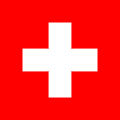
Die in der Schweiz wohnhafte königliche Familie ist in den Ferien in
- Champex-Lac (1470 m.ü.M.) (Sommer)
- Arosa (1775 m. ü. M.) (Skiurlaub, Winter)
Abb.: Lage von Champex-Lac
[Bildquelle: OpenStreetMap. -- Creative Commons Lizenz (Namensnennung, share alike)]
Abb.: Champex-Lac, 2012
[Bildquelle: Bescoff / Wikimedia. -- Creative Commons Lizenz (Namensnennung, share alike)]
Abb.: Lage von Arosa
[Bildquelle: OpenStreetMap. -- Creative Commons Lizenz (Namensnennung, share alike)]
Abb.: Arosa, 1905
[Bildquelle: Wikimedia. -- Public domain]
1937

Wiedereröffnung der Gesandtschaft Siams in Berlin. In Berlin reidierender Gesandter ist: Phra Sunthara [พระสุนทรวาจนา (สุนทร สาลักษณ์)] Vachana.
1937

Leutnant Prayoon Pamornmontri ร.ท. ประยูร ภมรมนตรี (1897 - 1982) studiert im Deutschen Reich ein Jahr lang "military science". Gerüchten nach ist er im Deutschen Reich, um im Auftrag von Luang Phibulsongkram (พิบูลสงคราม, 1897 - 1964) zu studieren, wie Adolf Hitler die Diktatur errichtete.
Prayoon berichtet über seinen Aufenthalt im Deutschen Reich in:
ประยูร ภมรมนตรี [Prayoon Pamornmontri]<1897 - 1982>: ชีวิต 5 แผ่นดินของข้าพเจ้า [Mein Leben in fünf Reichen]. -- กรุงเทพฯ : บรรณกิจ, 2518 [= 1975]. -- 552 S. : Ill. ; 22 cm
Abb.: Einbandtitel
1937
Bangkok: Eröffnung der ersten Klinik für Geschlechtskrankheiten
1937
Kinderarbeit und Kinderhandel:
"Maltreatment of children, aside from their suffering as a result of hygienic and dietary ignorance, exists only in the cities, and then principally among the immigrant Chinese, who sometimes work their children very hard. In 1937 the Bangkok Times, in an article commending the Government’s efforts to improve the physique of young people, urged that something be done about child labor. That it existed in the form of drawing water and hewing wood in Bangkok was obvious, but to what extent sweated industries and forced labor in shops and behind closed doors existed was unknown. Presumably information will be forthcoming in the Government’s labor survey, now in preparation. It is, however, in the regulated sale of children that hardship is most widespread. The recent investigations of the Criminal Investigation Department, which were the result of a vigorous press campaign, revealed conclusively a systematic trade in children. Poor parents were sometimes forced to sell their children through agents, who glibly promised them the tenderest and noblest of foster-parents. The selling of daughters as concubines and the placing of children as retainers in a patron’s home were well established Siamese traditions; but it was the Penal Code of 1908, and later the depression, that put the custom on a commercial basis. The law of 1908 set aside the old Siamese law, which gave parents much greater authority over their children; and twelve was made the age of consent. The age was later raised, but the limitation of parental authority was not only an innovation in Siam but unprecedented in civilized countries.
Under the new law kidnapping children from the ages of ten to fourteen became illegal only for ransom or for immoral purposes, which were hard to prove. Girls sold ostensibly for domestic service were put into brothels; and though the Government was officially against this, public opinion was still lethargic. Rama VI had scored "parental irresponsibility as being responsible for the present rather unsatisfactory state of morality prevalent in Bangkok and other towns,"5 and public opinion still condones by acquiescence the looseness of morality. Prince Sakol [หม่อมเจ้า สกล วรวรรณากร วรวรรณ - M. C. Sakol Varavarn, 1888 - 1952] is trying by vigorous propaganda to awaken Bangkok people and especially to interest Siamese ladies in the organization of a service for unwanted children and unmarried mothers."
[Quelle: Thompson, Virginia <1903 - 1990>: Thailand the new Siam. -- New York : Macmillan, 1941. -- S. 688f.]
1937
"In 1937 the Ministry of Education "adopted a policy of encouraging private schools to take over elementary education," and an annual subsidy was established to support this move, with mission schools sharing in the financial assistance." [Quelle: Nairn, Ronald C.: International aid to Thailand: the new colonialism?. -- New Haven : Yale University Press, 1966. -- 228 S. ; 22 cm. -- (Yale studies in political science ; 19). -- S. 147. -- Fair use]
1937
Abb.: Reiche Dame mit Auto, 1937
1937
Abb.: Songtaew, Amphoe Sri Satchanalai (ศรีสัชนาลัย), 1937
Abb.: Lage von Amphoe Sri Satchanalai (ศรีสัชนาลัย)
[Bildquelle: OpenStreetMap. -- Creative Commons Lizenz (Namensnennung, share alike)]
1937

Abb.: Kremation eines hohen buddhistischen Abtes, Amphoe Tha Wang Pha (ท่าวังผา), 1937
Abb.: Lage von Amphoe Tha Wang Pha (ท่าวังผา)
[Bildquelle: OpenStreetMap. -- Creative Commons Lizenz (Namensnennung, share alike)]
1937

"Im Jahre 1937 musste sich die "Mahathera-Samakhom" [มหาเถรสมาคม] mit einem Bericht der Zeitung "Siam Review" [สยามรีวิว] befassen, die behauptet hatte, Somdet Phra Wachirayanawong [สมเด็จพระ วชิรญาณวงศ์, 1872 - 1958], Oberhaupt des Thammayutika-Nikaya [ธรรมยุติกนิกาย], habe die Mönche des Mahanikaya [มหานิกาย] als schlecht und unsauber bezeichnet. Die Zeitung war damals gezwungen worden, ihre Darstellung zurückzuziehen, weil ihre Beweise für diese Behauptung nicht ausreichten. Die Entrüstung die der Bericht allerdings auslöste, deutet auf die gespannte Atmosphäre zwischen den beiden Nikayas hin." [Quelle: Skrobanek, Walter <1941 - 2006>: Buddhistische Politik in Thailand : mit besonderer Berücksichtigung des heterodoxen Messianismus. -- Wiesbaden : Steiner, 1976. -- 315 S. ; 24 cm. -- (Beiträge zur Südasienforschung ; 23). -- ISBN 3-515-02390-9. -- Zugl.: Heidelberg, Univ., Diss., 1972. -- S. 71 - 73. -- Mit Erlaubnis des inzwischen verstorbenen Autors]
1937
Volkszählung (Stichtag 1937-03-27)
1937
Alterspyramide gemäß Volkszählung:
Abb.: Alterspyramide gemäß Volkszählung 1937 (in 1000 EW)
[Datenquelle: Mitchell (1982), S. 60]
1937
Fund Raising Restriction Act: verbietet alle Geldsammlungen, die die Beziehungen Siams zu Japan trüben könnten. Richtet sich also in erster Linie gegen die Chinesen.
1937

Abb.: Antifranzösische Demonstration, Bangkok, 1937
1937
In Siam gibt es 44 ausländische Zinnbergbaugesellschaften. Der Großteil des Zinnabbaus wird aber von Kleinstgruppen mit minimalem Kapital und minimaler Ausrüstung betrieben.
1937

Die japanische Firma South Seas Enterprises, Inc. investiert in Siam in Kautschukplantagen, um Japan dieses strategisch wichtige Material zu sichern.
1937

Die American Primate Expedition fordert von Siam Sofortmaßnahmen zum Artenschutz. Einige wertvolle Tierarten seien schon ausgerottet worden.
1937
1-Satang-Münze (สตางค์):
Abb.: 1-Satang-Münze (สตางค์) ab 1937
[Bildquelle: Octahedron80 / th.Wikipedia. -- Public domain]
1937
Der Militärhaushalt beträgt 26 Mio. Baht (= 24% des Staatshaushalts).
1937
Ein Schulinspektor zur Situation der Schulbildung in den malayisch-sprachigen Südprovinzen:
Abb.: Siamesisch-malayische Grenzregion
[Bildquelle: Don-kun / Wikipedia. -- Creative Commons Lizenz (Namensnennung, share alike)]
"
- Malay adults object to purely Siamese education for their children because Siamese is not their language.
- They object because their children have no opportunity to study Mohammedanism if Siamese is their language. They fear their children will be won over to Buddhism.
- They object to having their children study for three years and still not know either Siamese or Malay well.
It is consequently suggested:
- If the government intends to enforce the educational laws, those laws should be strictly enforced in order to guarantee the Malay people a basic Siamese education. Malay education should be allowed after the pupils have a Siamese foundation.
- If an attitude of tolerance is to be shown, then it would be better to encourage a Malay education, using Siamese script for the Malay words.
- After becoming familiar with Siamese script, the Malays could easily learn Siamese."
[Übersetzung: Landon (1939), S. 85]
1937
Auslandsstudium: staatliche Ausgaben für Stipendien zum Studium im Ausland: 428.800 Baht (80 Stipendiaten)
Abb.: Thailändische Studierende im Ausland 1937: staatliche Stipendiaten und privat Finanzierte
[Datenquelle: Landon (1939), S. 111]
1937
Abb.: Bahnhof Lopburi (ลพบุรี), 1937
Abb.: Lage von Lopburi (ลพบุรี)
[Bildquelle: OpenStreetMap. -- Creative Commons Lizenz (Namensnennung, share alike)]
1937
Für die Fahrt auf dem Chao Phraya (แม่น้ำเจ้าพระยา) vom Meer zum Hafen Bangkok werden siamesische Lotsen obligatorisch. Damit wird das 70 Jahre alte Monopol ausländischer Lotsen zerstört. Einrichtung eines Lotsen-Gerichtshofs und eines staatlichen Lotsenverbands.
1937/1938

Im Staatsbudget werden für den Ausbau des Hafens Bangkok 2,9 Mio. Baht ausgewiesen. Den Zuschlag für den Bau eines neuen Docks bekommt die dänische Firma Christiani and Nielsen. Insgesamt sind 4 Mio Baht geplant. Vier Jahre lang sollen 500 Arbeiter beschäftigt sein.
1937
Die Kriegsmarine hat
- Altbestand 1935
- 2 Kanonenboote
- 3 Zerstörer
- 4 Torpedoboote
- 4 Begleitfahrzeuge
- 1 Patrouillenboote
- Neuanschaffungen seit 1935
- 2 kleine Kreuzer
- 9 Zerstörer
- 8 Motor-Torpedoboote
1937
Bisher hat Siam Sojabohnen in großem Umfang aus der Mandschurei importiert. Nun ist der Preis auf über das Doppelte gestiegen. Deshalb startet die Regierung ein Projekt zum Intensivanbau von Sojabohnen in Siam.
Abb.: Sojapflanzung, Thailand, 2009
[Bildquelle: James Burke. -- http://www.flickr.com/photos/12572907@N00/3233589407. -- Zugriff am 2013-12-05. -- Creative Commons Lizenz (Namensnennung, keine kommerzielle Nutzung, share alike)]
Abb.: Sojabohnen (Glycine max)
[Bildquelel: Scott Bauer., USDA / Wikipedia. -- Public domain]
1937
Der sechzehnjährige Prasert Na Nagara (ประเสริฐ ณ นคร, geb. 1919), der auf den Philippinen studiert, wird als mathematisches Genie erkannt.
Abb.: Prasert Na Nagara (ประเสริฐ ณ นคร)
[Bildquelle: th.Wikipedia. -- Fair use]
1937
In einer Stadt Südthailands eröffnet eine Privatschule eine Schulbibliothek. Dies ist so "revolutionär", dass einige Hundert VIP der Zeremonie beiwohnen. Die Bibliothek besteht aus drei kleinen Regal-Reihen von Büchern in Thai und Englisch.
1937

Siam erwirbt von Italien sieben neue Torpedo-Boote und zwei Minenleger.
Abb.: Italienisches Torpedoboot, 1938
[Bildquelle: Jeanmagot / Wikimedia. -- Creative Commons Lizenz (Namensnennung, share alike)]
Abb.: Italienischer Minenleger, 1938
[Bildquelle: Wikimedia. -- Public domain]
1937
Die wichtigsten ausländischen Firmen in Siam:
- Anglo-French Exploration Company: Zinn
- Anglo-Siam Corporation: Holz, allgemeiner Handel
- Anglo-Siam Tin Syndicate: Zinn
- The Asiatic Petroleum Company of Siam: Erdöl
- Bangkok Dock Company: gegründet 1865, Schiffsbau, Konstruktion, Technik
- Bangrin Tin Dredging Company Ranong: Zinn
- Bangkok Manufacturing Company: gegründet 1899, Eis, Sprudel
- Barrow Brown and Company LTd: gegründet 1917, Technik, Handel
- Bombay-Burma Trading Corporation Ltd.: Teakholz, Schifffahrt
- The Borneo Company: Teakholz, Reis
- British-American Tobacco: Tabak
- Christians and Nielsen: dänisch, Technik, Bauwesen
- Diethelm and Company: Schweiz, Technik, Schifffahrt
- East Asiatic Company Ltd.: dänisch, gegründet 1897, Schifffahrt
- Louis T. Leonowns Ltd.: Teakholz
- Meklong Railroad Company Ltd.: Eisenbahn
- Menam Motor Boat Company Ltd.: Schifffahrt
- Nawang Pet Tin Ltd.: gegründet 1910, Zinn
- Pungah Tin Dredging Company: Zinn
- Renong Consolidatet Tin Dredging Company: Zinn
- Siam Electric Company: gegründet 1898, Elektrizität
- Siamese Tin Syndicate: britisch, Zinn
- The Siam Steam Navigation Company: gegründet 1883, Dampfschifffahrt
- The Siam Steam Packet Company: Fracht
- The Southern Tin Dredging Company: gegründet 1933, Zinn
- Tha United Engineers: gegründet 1912, Technik, Verschiedenes
[Ausführlichere Angaben in: Thompson, Virginia <1903 - 1990>: Thailand the new Siam. -- New York : Macmillan, 1941. -- S. 831 - 841]
1937
Der Staat beauftragt den US-Bodenkundler Robert Larimore Pendleton (1890 - 1957), den Filipino Sarot Montrakun und den Thai Rerm Buranalerk eine Bodenkartierung Siams durchzuführen. So soll die für die jeweiligen Böden optimale Landwirtschaft bestimmt werden. Die von ihnen erstellte erste Bodenkarte Thailands wird 1960 veröffentlicht.
Abb.: Karte der Böden Thailands, 1960
[Bildquelle: http://www.fao.org/fileadmin/user_upload/GSP/docs/Presentation_china_feb2012/Potichan.pdf. -- Zugriff am 2013-12-02. -- Fair use]
1937

Einrichtung einer Radio-Telefon-Verbindung mit Japan.
Abb.: Siam - Japan
[Bildquelle: OpenStreetMap. -- Creative Commons Lizenz (Namensnennung, share alike)]
Abb.: Radio-Telefon-Einrichtung, 1941
[Bildquelle: National Archives and Records Administration / Wikimedia. -- Public domain]
1937


Ca. 200 Siamesen studieren in Japan, ebenso viele auf den US-amerikanischen Philippinen.
1937 (?)

Die letzte Veröffentlichung Sangharaja Somdet Kromma Luang Jinavorn Sirivaddhana (สมเด็จพระสังฆราชเจ้า กรมหลวงชินวรสิริวัฒน์ = Momchao Phuchong Jombhunuj Sirivaddhana - หม่อมเจ้าภุชงค์ ชมพูนุท สิริวฑฺฒโน, 1859 - 1937) befasst sich mit der Frage, ob Buddha ein Vegetarier war. Der Autor verneint diese Frage.
1936 - 1939
Durch Theaterstücke von Luang Wichitwathakan (หลวงวิจิตรวาทการ / 金良, 1898 - 1962) werden zahlreiche patriotische Lieder populär, z. B. "Die goldene Halbinsel" (แหลมทอง) aus dem Stück "Die Schlacht von Thalang" (ศึกถลาง) 1937:
Abb.: Lage von Thalang (ถลาง)
[Bildquelle: OpenStreetMap. -- Creative Commons Lizenz (Namensnennung, share alike)]
(สร้อย) แหลมทองไทยเข้าครองเป็นแดนไทย
แหลมทอง ไทยเข้าครองเป็นแดนไทย
ไทยสยามอยู่แม่น้ำเจ้าพระยา
โขงสาครไทยก็จองครองที่ดิน
ไทยอิสลามอยู่ลำน้ำตานีขอพวกเราชาวไทยของแดนทอง
แล้วย้ายแยกแตกกันไปเป็นสาขา
ไทยสยามมุ่งจิตคิดสัมพันธ์
รักกันไว้ เราพวกไทยในแดนทอง
และปิง วัง ยม นา น่านนที(สร้อย)
สาละวินไทยใหญ่อยู่เป็นที่
ต่อลงไปไทยก็มีอยู่เหมือนกัน(สร้อย)
หมายใจปองผูกรักสมัครมั่น
ผูกไมตรีทั่วกันในแหลมทอง(สร้อย)
(Chorus) The Golden Peninsula, we Thais have made it our land; stay united, the Thais of this Golden Peninsula. The Golden Peninsula, we Thais have made it our land; throughout these territories we belong.
The Thai Siam settled along the Chao Phraya River; and all waters of Ping, Wang, Yom, Nan.
(Chorus repeated)
The Mekhong River we occupied; and the Salween River reside the Shan.
Islamic Thai live along the River Tani; further down lived other Thais.
( Chorus repeated)
Bring our hearts together, we the Thai of the Golden Land. Come, we Thai Siam; let’s determine to Foster friendship and goodwill to all in this Golden Peninsula.
( Chorus repeated )
Video mit Gesang: http://www.thaidances.com/vdo_demo/35_2.htm. -- Zugriff am 2012-03-01 Übersetzung: Thai politics (1978), S. 320 1938 erscheint das Lied เลือดไทย (Thai Blut):
เลือดไทยไหลริน ทาแผ่นดินไว้ชื่อ
ให้โลกรู้ร่ำลือ ว่าเลือดไทยกล้าหาญ
เลือดไทยไหลหลั่ง ดุจน้ำเต็มฝั่ง ไหลดั่งท้องธาร
ท่วมแผ่นดินทอง บ้านพี่เมืองน้อง กันทุกถิ่นฐาน
เลือดไทยเจ้าเอ๋ย ไหลเลยมานี่ ปรองดองน้องพี่ อย่าม
ร้าวราน
โลหิตสายเดียว กลมเกลียวกันไว้ อย่าแตกแยกไป เป็นสาย
ลำธาร
Abb.: Luang Wichitwathakan - หลวงวิจิตรวาทการ
[Bildquelle: th.Wikipedia. -- Public domain<]
"Major-General Luang Wichitwathakan (also known as just Wichit Wichitwathakan) (Thai หลวงวิจิตรวาทการ, วิจิตร วิจิตรวาทการ; Chinese 金良) (August 11, 1898[1]–March 31, 1962[2]) was a Thai politician, playwright and historian. He was the chief ideologue and creator of cultural campaigns during the pre-World War II military rule of Field Marshall Plaek Pibulsonggram (แปลก พิบูลสงคราม), aimed at increasing the sense of nationalism of the Thais. Early life
Wichitwathakan was born Kim Liang (Chinese: 金良), the son of a merchant in Uthai Thani Province (อุทัยธานี),[3] .[4]
In a 1986 interview, his cousin Witun Wathanaparueda, a former Thai ambassador to Brazil and South Vietnam, said their paternal grandfather was an ethnic Chinese, adding that their family had been culturally assimilated into Thai ways.[5]
Throughout his political life, however, Wichitwathakan would deny having any Chinese ancestry, claiming his Chinese birth name was due to a custom of the local Thais, in which parents give their Thai children Chinese names.
Luang Wichitwathakan was prominently engaged in politics and the modernization of Thailand. He played an important role in establishing the Thai national identity and in changing the name of the country from Siam.[6]) He was also a prolific writer and playwright.
He received his primary education in a Buddhist temple school in Uthaithani. He continued the Buddhist education at Wat Mahathat (วัดมหาธาตุยุวราชรังสฤษฎิ์ราชวรมหาวิหาร) in Bangkok. He excelled in Buddhist studies, reaching a high stage of Parien and graduating first in the kingdom. He received an award from King Vajiravudh for academic excellence.
While still a monk in Wat Mahatat, Wichitwathakan wrote extensively in papers which he circulated among the monks. The papers were written in English, French, or German and were sometimes inflammatory regarding temple rules and regulations. This was finally stopped by the abbot, who prohibited the use of western languages .[7] In 1913, Wichitwathakan adopted the surname Wathanapreeda (which literally means development of happiness), following the royal decree issued by King Vajiravudh for all Thais to have surnames.[8]
Wichitwathakan had a keen interest in English and French, and translated some original Thai literary works into English, which he published through a Chinese curator, but which met with little commercial success.[9] Between 1921-1927 Wichit studied at the University of Paris.[10]
Service in France
At the age of 20, Wichitwathakan decided to leave the monkhood in favor of secular life and was admitted to the Ministry of Foreign affairs as a junior clerk. From this position in 1918, Wichitwathakan rose, through his own exceptional capability and diligence, to become Minister of Foreign Affairs in 1942.In 1921, Wichitwathakan was posted to the Royal Siamese Legation (equivalent to present-day embassy) in Paris, France, as Third Secretary. During his five years in Europe, Wichitwathakan served as a member of the Siamese delegation that attended and participated in deliberations of the League of Nations in Geneva, Switzerland. He also studied Law and Political Sciences at the University of Paris. It was in Paris that he developed close friendships with the future revolutionaries, Pridi Phanomyong, also studying Law at Sorbonne, and Plaek Pibulsongkram, a military officer studying Artillery in France.
MarriageWhile in Paris, Wichit took French lessons from Lucienne Laffitte (née Guillaume), a cultivated French lady who was well-read and musically gifted. They subsequently married and together returned to Siam in the year 1927. While Wichitwathakan continued to work at the Ministry of Foreign Affairs, Madame Lucienne collaborated with him in several of his important historical publications, notably Prawatsart Sakon ("Universal History" - in this context means international or world history). Despite this creative partnership and the births of a son and a daughter, the marriage dissolved six years later and Madame Lucienne returned to France with her two children.[11] Luang Wichit subsequently married Prapapan Rapipan (Khunying Prapapan Vichit-Vadakan), a teacher of history and daughter of Khoon Vorasarndarunkit who was in charge of education in northern Siam under King Rama V.
In SiamAfter his return to Siam, Wichitwathakan met again with Pridi Phanomyong and Plaek Pibulsongkram, the conspirators of the Siamese coup d'état of 1932;[12].
Wichitwathakan was chairman of the committee which proposed changing the country's name from Siam to Thailand at the state convention in 1939. He led an irredentist campaign after being presented a map produced by Ecole Francaise d'Extrene Orient showing the Thai race inhabiting the areas of Siam, Burma and Southern China. Wichitwathakan estimated from this map that there were approximately 60 millions Thai inhabiting the lands of Southern China and Southeast Asia, and through his personal crusade as both a historian and a politician, was instrumental in effectuating the name change from Siam to Thailand when the state convention ratified the committee's proposal in 1939.
Revolutionary roleAlthough Wichitwathakan did not participate in the revolution against King Prajadhipok, he performed an important role in the conversion from absolute monarchy to constitutional monarchy. When Pridi Phanomyong started the clandestine party called Khana Ratsadon (คณะราษฎร, People's Party), he consulted with former Thai students from Paris including Field Marshal Pibulsongkram, Prayun Phamonmontri and Thatsanai Mitraphakdi and Wichitwathakan. Pridi Phanomyong (ปรีดี พนมยงค์) specifically asked Wichitwathakan to join this secret association whose purpose was to overthrow the absolute monarchy. Wichitwathakan at this point in time still maintained loyalty to King Prajadhipok and was in favor of a conciliatory approach with regard to the Siamese royalty. Concerned about the socialistic and communistic ideology of Pridi Phanomyong, Wichitwathakan joined a royalist and free enterprise party called Kana Chart (National Party) while continuing to attend the clandestine meetings of the Ratsadon Party.
When King Prajadhipok indicated his willingness to support the armed royalist challenge to the People's Party and gave his blessing to Prince Bovoradej to mobilize his soldiers and attack Bangkok, Wichitwathakan forsook his loyalty to the King to align himself with the representative government as a member of the national assembly. While Pibul fought the insurrection of Prince Bovoradej (พระเจ้าบรมวงศ์เ้ธอ พระองค์เจ้าบวรเดช) militarily, Wichitwathakan played an important political role by being in charge of convincing the public and uncommitted military forces in the provinces to side with the government.
Wartime serviceIn 1942, Wichitwathakan became Minister of Foreign Affairs under Prime Minister Field Marshal Pibulsongkram and was responsible for negotiating free passage for the invading Japanese army in exchange for maintaining the sovereignty and independence of Thailand. He then assumed the duty of Thai Ambassador to Japan during the remainder of World War II, being stationed in Tokyo. Upon the unconditional surrender of Japan to the Allies at the end of the World War II conflict, Wichitwathakan was arrested by the American occupying forces along with the German Ambassador, Italian Ambassador and the entire Japanese Cabinet. His wife, Khunying Wichitwathakan requested and obtained a personal audience with General Douglas MacArthur during which she succeeded in explaining to him that as Foreign Minister, her husband had no alternative but to negotiate a treaty of free passage in exchange for maintaining the independence of Thailand. General Douglas MacArthur released Wichitwathakan from imprisonment and allowed him to return to Thailand on an American airplane. However, upon arrival to Bangkok, Wichitwathakan was rearrested and imprisoned by the new postwar government of Prime Minister Khuang Apaiwong (ควง อภัยวงศ์). Wichitwathakan was incarcerated along with former Prime Minister Field Marshal Pibulsongkram, to be tried in Thai court as war criminals. Subsequently, all charges were dropped and they were both acquitted and released from incarceration.
Post-war serviceAfter having been granted freedom, Luang Wichitwathakan temporarily dissociated himself from politics and became a nationally prominent playwright, author and historian. Most of his plays, songs, fictions as well as history and religious books were composed during the four years following his release from incarceration.
Then in the year 1948, Luang Wichitwathakan assisted Field Marshal Pibulsomgkram in staging a coup d'état which toppled Kuang Apaiwong from power. Wichitwathakan served in the new government as Minister of Finance and Minister of Economic Affairs and subsequently became Ambassador to India in 1952 and Ambassador to Switzerland, Austria and Yugoslavia in 1953. He also promoted the unification and nationalism of the people of Thailand by composing a series of nationalistic theatrical works, known as the Anupap series, which were performed at the National theater. This series of plays, titled Anupap Porkoon Ramkamhaeng (Power of King Ramkamhaeng), Anupap Haeng Kwam Seasara (Power of Sacrifice), Anupap Haeng Kwam Rak (Power of Love) were composed at the urging of Prime Minister Pibulsongkram with the purpose of strengthening the unity and cohesiveness of the Thai people.
In 1958, Luang Wichitwathakan participated in the coup d'état staged by Field Marshal Sarit Thanarat and removed Field Marshal Pibulsongkram from power. Wichitwathakan assumed the title of Paladbunchagarn of the Prime Minister's Office, equivalent to the position of Chef du Cabinet, or Secretary General of Office of the Prime Minister. He served Field Marshal Sarit as his closest confidant and advisor and politically played an active role in promoting the nationalism of the people of Thailand.
Wichitwathakan died in 1962 at age 64 years after a long cardiac illness.
Appointments1934-1942. Director General of the Department of Fine Arts
1942-1943. Minister of Foreign Affairs
1943-1945. Ambassador to Japan
1951-1952. Minister of Finance
1952. Minister of Economic Affairs
1952-1953 Ambassador to India
1953-1957 Ambassador to Switzerland, Austria and Yugoslavia
1957-1962 Paladbunchagarn (Special Assistant) to the Office of the Prime Minister Field Marshal Sarit Thanarat
Published Works PlaysLeod Supan (Blood of Supan) - Rachamanu - Suek Talang (Battle of Talang - Pra jao Krung Thon (King of Thonburi) - Tai Dab Na (Death at next Sword) - Po Kun Pa Mueng (King Pa Mueng) - Petch Pra Narai (Diamond of King Narai - Lan Leod Lan Rug (Territory of Blood Territory of Love) - Sriharajdecho - Dab Saen Mueng (Sword of a Hundred Thousand Cities) - Pra Naresuan Pragard Issarapap (King Naresuan Declares Independence) - Rachatida Pra Ruang (Royal Daughter of Pra Ruang) - Jao Ying Gannigar (Princess Gannigar) - Jao Ying Sanwee (Princess Sanwee) - Krut Dum (Black Garuda) - Anupap Po Kun Ramkamhang (Power of King Ramkamhang) - Anupap hang Kwam Rug (Power of Love) - Anupap Hang Kwam Seasara (Power of Sacrifice)
FictionPan Tong Rong Leod (Golden Receptacle for Blood) - Dok Fa Jampasak (Celestial Flower of Jampasak) - Ballang Chieng Rung (Throne of Chieng Rung) - Morasum Hang Cheevit (Tempest of Life) - Petch Pra Narai (Diamond of King Narai) - Plee Cheep Pue Choo (Sacrificing Life for Lover) - Huang Rug Hav Luek (Bond of Love Deep Crevice) - Fak Fa Salawin (Horizon of Salawin) - Athit Asadong (Western Sunset) - Lek Lang Kan (Iron for Vengeance)
Non-FictionMun Samong (Brain) - Puttanupap (Power of Buddhism) - Jittanupap (Power of Mind) - Manusapatiwat (Human Revolution) - Mahaburus (Great Men) - Kong Dee Nai India (Good things in India) - Vicha Paed Pragarn (Eight Sources of Knowledge) - Vicha Krong Ruen Krong Rug (Science of Domesticity and Love) - Vitee Tam Ngarn lae Srang Anakot (Way to Work and Build Future) - Anakot kong Chart (Future of Nation) - Sangsawang Nai Kwam Mued (Brightness in The dark) - Sassana Sagol (Universal religion) - Prawatsart Sagol (Universal History) - Watanatum Sukothai (Civilization of Sukothai) - Kwam Fun (Dream)
References
- Scot Barmé (1993). Luang Wichit Wathakan and the Creation of a Thai identity. Social Issues in Southeast Asia–Institute of Southeast Asian studies. p. 40. ISBN 981-3016-58-2.
- Scot Barmé (1993). Luang Wichit Wathakan and the Creation of a Thai identity. Social Issues in Southeast Asia–Institute of Southeast Asian studies. p. 1. ISBN 981-3016-58-2.
- Chris Baker, Pasuk Phongpaichit. A History of Thailand. Cambridge University Press. pp. 98, 288. ISBN 0521816157.
- Scot Barmé (1993). Luang Wichit Wathakan and the Creation of a Thai identity. Social Issues in Southeast Asia–Institute of Southeast Asian studies. p. 40. ISBN 981-3016-58-2.
- Scot Barmé (1993). Luang Wichit Wathakan and the Creation of a Thai identity. Social Issues in Southeast Asia–Institute of Southeast Asian studies. pp. 40, 57. ISBN 981-3016-58-2.
- Scot Barmé (1993). Luang Wichit Wathakan and the Creation of a Thai identity. Social Issues in Southeast Asia–Institute of Southeast Asian studies. p. 57. ISBN 981-3016-58-2.
- Scot Barmé (1993). Luang Wichit Wathakan and the Creation of a Thai identity. Social Issues in Southeast Asia–Institute of Southeast Asian studies. pp. 40–41. ISBN 981-3016-58-2.
- Scot Barmé (1993). Luang Wichit Wathakan and the Creation of a Thai identity. Social Issues in Southeast Asia–Institute of Southeast Asian studies. p. 57. ISBN 981-3016-58-2.
- Scot Barmé (1993). Luang Wichit Wathakan and the Creation of a Thai identity. Social Issues in Southeast Asia–Institute of Southeast Asian studies. p. 41. ISBN 981-3016-58-2.
- Chris Baker, Pasuk Phongpaichit. A History of Thailand. Cambridge University Press. p. 113. ISBN 0521816157.
- Scot Barmé (1993). Luang Wichit Wathakan and the Creation of a Thai identity. Social Issues in Southeast Asia–Institute of Southeast Asian studies. p. 43. ISBN 981-3016-58-2.
- Chris Baker, Pasuk Phongpaichit. A History of Thailand. Cambridge University Press. p. 117. ISBN 0521816157."
[Quelle: http://en.wikipedia.org/wiki/Luang_Wichitwathakan. -- Zugriff am 2011-11-08]
1937
Es erscheint die Erzählung Die Prostituierte (หญิงคนชั่ว) von Kanha Kiengsiri (กัณหา เคียงศิริ, Künstlername: K. Surangkhanang - ก. สุรางคนางค์, 1911 - 1999).
Englische Übersetzung:
K. Surangkhanang (ก. สุรางคนางค์) <1911 - 1999>: The prostitute / transl. with an introduction by David Smyth. -- Kuala Lumpur : Oxford Univ. Press, 1994. -- 229 S. ; 20 cm. -- (Oxford in Asia paperpacks). -- ISBN 976-65-3079-4. -- Originaltitel: หญิงคนชั่ว (1937)
Abb.: Einbandtitel der englischen Übersetzung 1994
1937
Es erscheint der Roman ข้างหลังภาพ von Siburapha (ศรีบูรพา = Kulap Saipradit - กุหลาบ สายประดิษฐ์ 1905 – 1974)
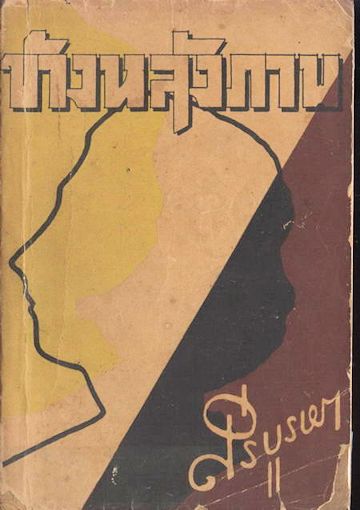
Abb.:
Einbandtitel
Englische Übersetzung: Seeboorapha [ศรีบูรพา = Kulap Saipradit - กุหลาบ สายประดิษฐ์] <1905 - 1974>: Behind the picture. -- [Übers.: Marcel Barang]. -- Internet edition [for Kindle]. -- 2009. -- (Thai modern classics). -- ISBN 97 8611 7107 122. -- Originaltitel: ข้างหลังภาพ (1937)
1937
Es erscheint der Roman:
ดอกไม้สด [Dok Mai Sot [= Buppha Kunchon - หม่อมหลวงบุปผา กุญชร] <1905 - 1963>: ผู้ดี [Feine Leute]. -- กรุงเทพฯ : ไทยเขษม, 2480 [=1937]. -- 756 S.
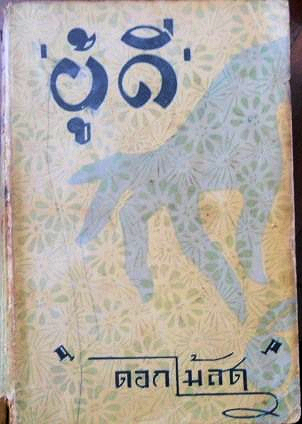
Abb.:
Einbandtitel
Englische Übersetzung: Dorkmai Sot [ดอกไม้สด] <1905 - 1963>: Noblesse oblige. -- Transl. by Marcel Barang. -- Internet edition [for Kindle]. -- 2009. -- (Thai modern classics). -- ISBN 97 8611 7107 146. -- Originaltitel: ผู้ดี (1937)
1937
Es erscheint:
Döhring, Karl <1879 - 1941>: Die Liebe der Prinzessin Amarin : Roman. -- Bremen : Schünemann, 1937. -- 383 S. ; 20 cm. -- Der Autor, der 1906 - 1911 und 1913 in Siam wirkte, bringt in dem Roman viele kulturgeschichtlich informative Details.
Abb.: Umschlagtitel
Abb.: Karl Döhring (1879 - 1941)
[Bildquelle: Umschlag]
1937
Abb.: Grammophon-Katalog, 1937
1937
Gründung des Fußballklubs Royal Thai Air Force (heute: Air Force United - แอร์ฟอร์ซ ยูไนเต็ด)
Abb.: ®Logo
[Bildquelle: Wikipedia]
"Der Verein ist einer der ältesten Vereine Thailands, gegründet 1937. In den 50er und 60er Jahren hatte der Klub seine erste glorreiche Phase. Von 1952 bis 1967 konnte er 10 seiner insgesamt 13 Meisterschaften gewinnen. 7 Meisterschaften konnte die Air Force in Folge gewinnen. Von 1957 bis 1962. Abgesehen von zwei gewonnen Queen’s Cup (ควีนสคัพ) Titeln in den 70er machte der Verein kaum noch von sich mit großen Titeln von sich reden. 1979 spielte erstmals Piyapong Piew-on (ปิยะพงษ์ ผิวอ่อน, 1959 - ) für den Klub. Bis heute ist die Historie des Vereins eng mit seinem Namen verknüpft. Später wurde er nicht nur einer der Helden der Vereinsgeschichte sondern auch des Thailändischen Fußballs. 1982 mit dem Queen’s Cup und dem Gewinn der 11. Meisterschaft. Mit den 90er Jahren und der Rückkehr von Piyapong konnte erstmals wieder an alte Erfolge angeknüpft werden. 1995, 1996 und 2001 wurde der Thailändische FA Cup gewonnen. 1996 war man Gründungsmitglied der neuen Thai Premier League (สปอนเซอร์ไทยพรีเมียร์ลีก) und schloss die Saison auf Platz 7 ab. Piyapong Piew-on beendete nach dieser Saison seine aktive Karriere und wurde Trainer seines Vereins. In seinem ersten Jahr in der Verantwortung konnte er gleich die Meisterschaft erringen. Es war die erste nach 1987 für den Klub und die insgesamt 10. Der Vizemeisterschaft 1998 folgte der bisher letzte Meistertitel in der Geschichte des Vereins. Einem weiteren Vizemeistertitel im Jahr 2000 folgte Ende der Saison 2003/04 der Abstieg in die zweite Liga Thailands. Seit dem Abstieg konnte man nicht wieder aufsteigen, mit einem dritten Platz in der Saison 2007 wurde nur knapp der Aufstieg verpasst. 2008 reichte es dann jedoch nur zu einem enttäuschenden 10. Platz. Zudem endete das Arrangement des langjährigen Trainers Piyapong. Insgesamt war er elf Jahre im Amt.
Über die Jahre hinweg nahm der Klub an den Wettbewerben des asiatischen Verbandes teil. Das beste Ergebnis erzielte der Verein dabei in der Saison 1989 des Pokalsieger Wettbewerbs. Dabei erreichte man zwar das Halbfinale, zog sich jedoch aus dem Turnier zurück."[Quelle: http://de.wikipedia.org/wiki/Air_Force_United. -- Zugriff am 2013-05-02]
1937
Gründung der Thailand Rugby Union (TRU)
Abb.: ®Logo
[Bildquelle: Wikipedia]
1937
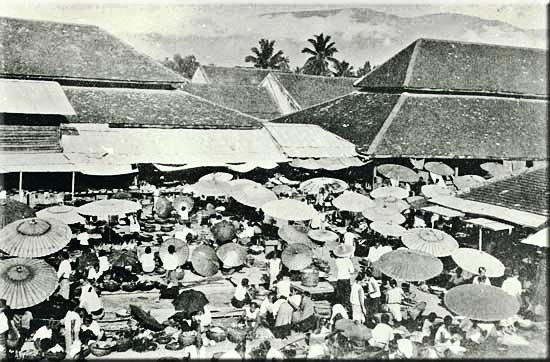
Abb.: Warorot-Markt (ตลาดวโรรส), Chiang Mai (เชียงใหม่),
B.E. 2480
[Bildquelle: Anne & Heiner Damm. --
http://www.hdamm.de/afotos/ah_opidx.htm. -- Zugriff am 2013-02-28. --
Creative Commons
Lizenz (Namensnennung, share alike)]
1937

Der französische Ingenieur Maurice Coupeaud erfindet den cyclopousse (Fahrradrikscha / Samlor - สามล้อ)
Abb.: Samlor (สามล้อ), 2013
[Bildquelle: SuwanneeP / Wikimedia. -- Creative Commons Lizenz (Namensnennung, Share alike)]
1937

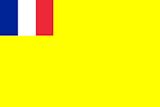
Es erscheint:
Thompson, Virgina <1903 - 1990>: French Indo-China. -- New York : MacMillan, 1937. -- 516 S. ; 24 cm. -- "Published for the American Council, Institute for Pacific Releations"
1937
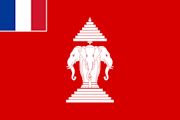
Bevölkerung von Vientiane (ວຽງຈັນ, Laos):
12.400 Vietnamesen
9.570 Laoten
Abb.: Lage von Vientiane (ວຽງຈັນ, Laos) (Grenzverlauf von 1942)
1937

Die deutsche Firma Temmler, Berlin, lässt ein neues Verfahren zur Herstellung von Methamphetamin patentieren. Ab 1938 bringt sie dieses unter dem Markennamen Pervitin in den Handel.
Abb.: Reklame für Pervitin
[Fair use]
Abb.: Panzerschokolade mit Pervitin
"In Deutschland wurde ab 1934 in den Berliner Temmler-Werken an einem weiteren Verfahren zur Herstellung von Methamphetamin geforscht, das im Oktober 1937 patentiert wurde.[13] Anschließend wurde Methamphetamin 1938 unter der Marke Pervitin von den Temmler-Werken in den Handel gebracht, die auch heute noch die Marke halten.[14] Auch mit Pervitin versetzte Pralinen, sogenannte Hausfrauenschokolade, waren erhältlich.[15] Verwendung im Zweiten Weltkrieg
Insbesondere während der Blitzkriege gegen Polen und Frankreich 1939/40 fand Methamphetamin millionenfache Verwendung. Unter den Spitznamen Panzerschokolade, Stuka-Tabletten und Hermann-Göring-Pillen diente das Mittel zur Dämpfung des Angstgefühls sowie zur Steigerung der Leistungs- und Konzentrationsfähigkeit bei Soldaten, Fahrzeugführern und Piloten.[16]
In der Zeit von April bis Juni 1940 bezog die Wehrmacht mehr als 35 Millionen Tabletten Pervitin. Der damalige Reichsgesundheitsführer Leonardo Conti [1900 - 1945] meinte am 19. März 1940 in seiner Rede vor dem NSD-Ärztebund im Berliner Rathaus[17]:
„Wer Ermüdung mit Pervitin beseitigen will, der kann sicher sein, dass der Zusammenbruch seiner Leistungsfähigkeit eines Tages kommen muss. Dass das Mittel einmal gegen Müdigkeit für einen Hochleistungsflieger, der noch zwei Stunden fliegen muss, angewendet werden darf, ist wohl richtig. Es darf aber nicht angewendet werden bei jedem Ermüdungszustand, der in Wirklichkeit nur durch Schlaf ausgeglichen werden kann. Das muss uns als Ärzten ohne weiteres einleuchten.“
Als dann am 25. Oktober 1940 in der Münchener Medizinischen Wochenschrift (MMW) ein Beitrag erschien, in dem Pervitin für beinahe alles von See- und Bergkrankheit und verzögerter Rekonvaleszenz bis hin zu organischen Hirn- und Rückenmarkstörungen empfohlen wurde, sah sich die Reichsgesundheitsführung veranlasst, den Psychiater Ernst Speer (1889 - 1964) als bekannten Kritiker des Medikaments mit einer Gegendarstellung zu berufen, die ebenfalls in der MMW erschien.[18][19]
Ab Mitte 1941 war das Medikament durch das geänderte Reichsopiumgesetz nicht mehr frei, sondern nur noch auf Rezept erhältlich. Dadurch reduzierte sich der Einsatz der Droge merklich.[20]
Die US-amerikanischen Psychiater Leonard und Renate Heston vermuten aufgrund einer nachträglichen Analyse von Adolf Hitlers Gesundheitsakten, dass Hitler spätestens seit 1942 pervitinabhängig gewesen sei.[21] Der Autor Norman Ohler (1970 - ) legt im Buch Der totale Rausch. Drogen im Dritten Reich[22] mit der Analyse der Aufzeichnungen von Theodor Morell (1886 - 1948), Leibarzt von Hitler ab 1936, Indizien für regelmäßigen Drogenkonsum (darunter Pervitin) von Hitler vor, aber auch dass der gesundheitlich angeschlagene tschechoslowakische Präsident Emil Hacha (1872 - 1945) in der Reichskanzlei erst nach einer massiv aufputschenden Spritze die Kapitulation unterschreiben konnte.[23] Allerdings wurden diese Thesen aufgrund der ungenauen Quellenlage des Buches u.a. von der Zeit kritisiert. [24]
Verwendung nach 1945Sowohl Bundeswehr als auch Nationale Volksarmee (NVA) lagerten Pervitin für den Ernstfall bis zu den 1970er Jahren ein.[25] Es war Bestandteil der Verpflegung für Fallschirmjäger und wurde bei Übungen ausgegeben.[25] Die NVA produzierte Pervitin in einer Fabrik in Königsbrück bis 1975; es wurde danach durch APo-Neuron abgelöst. Bei Piloten war Pervitin für den Notfall vorgesehen, und der Verbandsatz der NVA enthielt bis 1988 Pervitin.[25] Auch nach 1945 wurde der Wirkstoff vom US-Militär zur Leistungssteigerung eingesetzt, beispielsweise während des Vietnamkriegs. Im Sport soll Pervitin als Dopingmittel genutzt worden sein[26] (siehe auch: Fußball-Weltmeister 1954). Der österreichische Bergsteiger Hermann Buhl (1924 - 1957) benutzte Pervitin auf Anraten des Expeditionsarztes bei seiner Erstbesteigung des Nanga Parbat 1953.[27][28] Der deutsche Boxer Jupp Elze hatte sich 1968 vor seinem Kampf um die Europameisterschaft gegen Juan Carlos Duran mit Pervitin aufgeputscht und ging als erster deutscher Profisportler in die Geschichte ein, der an den Folgen von Doping starb.[29] Elze hatte 150 Kopftreffer erlitten, die er vermutlich nur wegen des durch Pervitin herabgesetzten Schmerzempfindens aushalten konnte, fiel ins Koma und starb an einer Gehirnblutung.[30] Das Fertigarzneimittel Pervitin blieb bis 1988 im Handel."
[Quelle: https://de.wikipedia.org/wiki/Methamphetamin. -- Zugriff am 2016-02-22]
1937

Die deutschen Chemiker Max Bockmühl (1882 - 1949) und Gustav Ehrhart (1884 - 1971) synthetisieren das Opioid Methadon, das später ein wichtiger Ersatzstoff zur Heroin-Therapie wird.
1937

Studenten der Universität Minnesota (USA) entdecken, dass Amphetamin Müdigkeit vertreibt, und benutzen es zum Durchlernen von Nächten. Methamphetamin wird Ende 20. Jahrhundert als Ya Ba [ยาบ้า] zur Hauptdroge in Thailand werden.
Abb.: Heute (2013) sind Metemphetamine (ya ba - ยาบ้า) das verbreitetste Suchtmittel Thailands
[Fair use]
1938

Abb.: Plakat der Firma Draeger, 1937
[Fair use]
"Ebenfalls interessiere sich das siamesische Verteidigungsministerium für die Gaswaffe. Nachdem dieses Ministerium den Leiter des ihm unterstellten Laboratoriums zwecks des Studiums dieser Frage nach Deutschland entsandt hatte, wurden nach Angaben der deutschen Gesandtschaft bereits im Frühjahr des Berichtsjahres 2.500 Gasmasken bei der Firma Draeger in Lübeck bestellt. So könne man mit der Bestellung einer weiteren größeren Anzahl von Gasmasken aus Deutschland rechnen, obwohl das siamesische Verteidigungsministerium mit dem Gedanken spiele, die Masken selbst im Land zu produzieren. Neben Gasmasken sollten laut der deutschen Gesandtschaft in Bangkok Apparate und Chemikalien für die Entseuchung vergaster Gebiete angekauft werden. Doch um unabhängig von ausländischen Produkten zu werden, habe das siamesische Verteidigungsministerium eine kleine Anlage zwecks Herstellung von Gaswaffen errichten lassen und dafür den dem Reichskriegsministerium ebenfalls bekannten Dr. [Anton] Cmentek aus Hamburg als Berater für alle mit Gas- und Gasschutz zusammenhängenden Fragen eingestellt." [Quelle: Catthiyakorn Sasitharamas [คัททิยากร ศศิธรามาส]: Die deutsch-thailändischen Beziehungen in der Zeit der Weimarer Republik bis zum Ende des Zweiten Weltkriegs. -- Hamburg : Kovač, 2012. -- 346 S. ; 21 cm. -- (Schriftenreihe Schriften zur Geschichtsforschung des 20. Jahrhunderts ; Bd. 4). -- ISBN 978-3-8300-6361-2. -- Zugl.: Hamburg, Univ., Diss., 2012. -- S. 267. -- Fair use]
1938 - 1944-11-26

Somdet Phra Ariyavongsagatanana (Phae Tissadeva) - สมเด็จพระอริยวงศาคตญาณ สมเด็จพระสังฆราช (แพ ติสฺสเทโว) (1856 - 1944) ist Sangharaja (สังฆราช)
Abb.: Somdet Phra Ariyavongsagatanana (Phae Tissadeva) - สมเด็จพระอริยวงศาคตญาณ สมเด็จพระสังฆราช (แพ ติสฺสเทโว)
[Bildquelle: th.Wikipedia. -- GNU FDLicense]
1937-04
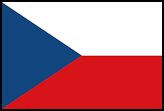
Mae Wang Sugar Industry Co. (บริษัท อุตสาหกรรมน้ำตาลแม่วัง จำกัด), Ltd. in Ko Kha (เกาะคา)
Beginn des Baus der Zuckerfabrik Mae Wang Sugar Industry Co. (บริษัท อุตสาหกรรมน้ำตาลแม่วัง จำกัด), Ltd. in Ko Kha (เกาะคา). Die tschechoslowakische Maschinenbaufirma Škoda baut sie für 827.000 Baht. Deutschland liefert die Baukräne zum Preis von nur 90 Baht pro Stück. Kapazität: 500 Tonnen Zucker pro Tag. Für das Fabrikgelände wurden Bauern enteignet. Es gibt einen Versuch, die Fabrik brandzuschatzen. Die Setzlinge der ersten zwei Sendungen aus Java verderben.
Abb.: Lage von Ko Kha (เกาะคา)
[Bildquelle: OpenStreetMap. -- Creative Commons Lizenz (Namensnennung, share alike)]
Abb.: Tschechoslowakei 1920 - 1938
[Bildquelle: Kiejstut9 / Wikipedia. -- Creative Commons Lizenz (Namensnennung)]
1937-04

Der König von Luang Prabang (ຫຼວງພະບາງ) schickt Phra Chan Souk und einen Novizen an das Institute Bouddhique in Phnom Penh (ភ្នំពេញ), um das Pali-Tipiṭaka (ພຣະໄຕຣປິດົກ) ins Laotische zu übersetzen. Bis 1939 erscheinen drei Bände der Übersetzung, dann erlischt das Vorhaben.
Abb.: Lage von Luang Prabang (ຫຼວງພະບາງ) und Phnom Penh (ភ្នំពេញ)
[Bildquelle. Wikimedia. -- Public domain]
1937-04-01


Großbritannien schafft das Burma Office. Damit wird Burma von British-India - verwaltet durch das India Office - als Crown Colony getrennt. Burma erhält beschränkte Selbstverwaltung mit einem eigenen Ministerpräsidenten. Erster Ministerpräsident ist Ba Maw (ဘမော်, 1893 - 1977).
1937-04-13
Abb.: Songkhran (สงกรานต์), Chiang Mai (เชียงใหม่), ca 1937-04-13
1937-04-27

Der britischen Gesandte, Josiah Crosby (1880 - 1958), an Außenminister Robert Anthony Eden, 1. Earl of Avon (1897 - 1977) über die Presse Siams:
"Unfortunately, there is only too good reason to believe that these anti-foreign tendencies are being fostered deliberately by the military party and that the Minister of Defence [Phibulsongkram -พิบูลสงคราม, 1897 - 1964] connives at them. Anti-French and anti-British references have even been allowed to appear in the official monthly organs of the Army and of the Navy... it is they who must be held ultimately responsible for the chauvinistic tone of press and its growing effect upon public opinion." "Unfavourable references to Germany and Italy in the vernacular journals are infrequent. Allusions to Japan are in general flattering, but the attitude of the military party towards her is none the less a guarded one. In the last resort they fear her... Their avowed object is to preserve their neutrality in the case of a war between Japan and Britain."
[Zitiert in: Charivat Santaputra [จริย์วัฒน์ สันตะบุตร]: Thai foreign policy 1932-1946. -- Bangkok : Thai Khadi Research Institute, Thammasat University, 1985. -- 465 S. ; 21 cm. -- ISBN 974-335-091-8. -- S. 148, 153]
1937 - 1939

Ba Maw (ဘမော်, 1893 - 1977) ist Ministerpräsident der britischen Kronkolonie Burma.
Abb.: Ba Maw (ဘမော်, 1893 - 1977) bei der Krönung von George VI, 1937
[Bildquelle: Catherine Bell / Wikipedia. -- Public domain]
1937-05-01

Flugplan der PanAm San Francisco (USA) - Hong Kong (香港): 6 Tage Flug anstatt 6 Wochen Schiffsreise.
Abb.: Flugplan der PanAm San Francisco (USA) - Hong Kong (香港), 1937-05-01
[Bildquelle: Wikipedia. -- Public domain]
Abb.: Sikorsky S-42, wie sie auf der USA-China Route von PanAm eingesetzt wurden, 1934
[Bildquelle: Wikipedia. -- Public domain]
1937-05-12

Königskrönung von George VI (1895 - 1952), Dei Gratia Magnae Britanniae, Hiberniae et terrarum transmarinarum quae in ditione sunt Britannica Rex, Fidei Defensor, Indiae Imperator.
Abb.: George VI, Dei Gratia Magnae Britanniae, Hiberniae et terrarum transmarinarum quae in ditione sunt Britannica Rex, Fidei Defensor, Indiae Imperator, 1937-05-12
[Bildquelle: Ehudg / Wikimedia. -- Public domain]
1937-05-25 - 1937-11-25

Siam nimmt an der Exposition Internationale des Arts et Techniques dans la Vie Moderne in Paris teil.
Abb.: Briefmarke
[Bildquelle: Wikipedia. -- Public domain]
Abb.: Der Pavillon Siams 1937
[Public domain]
1937-05-28 - 1940-05-10

Neville Chamberlain (1869 - 1940) ist Prime Minister Großbritanniens.
1937-05-28 - 1940-05-01

Edwin L. (Lowe) Neville (1884 - 1944) ist Gesandter der USA in Bangkok.
1937-06
Das Wirtschaftsministerium beschließt in Korat (โคราช) eine Seidenspinnerei zu bauen. Kosten 10.000 Baht. Als Arbeiter sind Häftlinge vorgesehen. Die Produktionsanlage wird aus Europa importiert.
Abb.: Lage von Korat (โคราช)
[Bildquelle: OpenStreetMap. -- Creative Commons Lizenz (Namensnennung, share alike)]
Abb.: Traditionelle Seidenspinnerin, Kalasin (กาฬสินธุ์), 2012
[Bildquelle: Larry Oien. -- http://www.flickr.com/photos/11192595@N08/7828338600. -- Zugriff am 2013-12-07. -- Creative Commons Lizenz (Namensnennung, keine kommerzielle Nutzung)]
1937-06
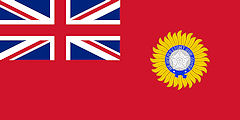

Um Japan einzudämmen, verbietet Britisch-Indien die ganze Küstenschiffahrt Indiens und Burmas für nicht-britische Schiffe.
1937-06-10

Inbetriebnahme der in Japan gebauten Korvette HTMS Maeklong (ร.ล. แม่กลอง) durch die Thai Marine.
Abb.: HTMS Maeklong (ร.ล. แม่กลอง), 2005
[Bildquelle: Ahoerstemeier / Wikimedia GNU FDLicense]
Abb.: HTMS Maeklong (ร.ล. แม่กลอง), 2005
[Bildquelle: Ahoerstemeier / Wikimedia GNU FDLicense]
1937-06-04
Die Zeitung ประชาชาติ (Prachachat) wird zensiert. Herausgeber ist Prinz Wan Waithayakon (พระเจ้าวรวงศ์เธอ พระองค์เจ้า วรรณไวทยากร กรมหมื่นนราธิปพงศ์ประพันธ์, 1891 - 1976). Anlass für die Zensur ist, dass die Zeitung die Partei für einige Fahrradrikscha-Fahrer ergriffen hat, die in Streit mit Armee-Lkw-Fahrern hatten. Eine Gruppe von Soldaten marschierte dann zu Prinz Wans Haus, der nur durch Flucht in ein Reisfeld sich vor Prügeln durch die Soldaten retten konnte.
1937-07

Der britische Adviser to the Ministry of Finance, William A. M. Doll (1895 - ) veröffentlicht seinen ersten Bericht:
"An eminent Chinese banker congratulated his countrymen in 1932 on the fact that all through the depression Chinese immigrants in Siam had not diminished the scale of their remittances home, which he placed at an aggregate of $50 million per annum, a sum equal at the then rate of exchange to no less than Baht 37 million. It is possible that this was an overestimation, and there are no means available in Siam of checking the calculation: but the statement is probably not far short of the truth. It is no secret that the Siamese himself does not take kindly to commerce, and most of the internal and practically all of the external trade is in foreign hands. The trouble lies in the fact that nearly all the profits of internal trade are remitted and not retained in the country. They form part of the invisible imports. . . .
Careful attention should be devoted to any measure or series of measures the object of which is the retention of a larger share of the country’s earnings; for attainment of this object would result in the building up of those resources of national wealth available for capital development, which are today so strikingly non-existent."
[Zitiert in: Landon, Kenneth Perry <1903 - 1993>: The Chinese in Thailand. -- Londondon : Oxford UP, 1941. -- 310 S. ; 23 cm. -- (International Research Series of the Institute of Pacific Relations). -- S. 165]
1937-07
Es erscheint:
Vichitr Vadakarn [วิจิตร วิจิตรวาทการ] <1898 - 1962>: The evolution of Siamese music. -- In: Siam Today. -- 1937-07. -- S. 71 - 80
Ein Sonderdruck diese Artikels wird vom Department of Fine Arts 1942 veröffentlicht. 1957-02-08+15 erscheint dieser Artikel unter dem Titel "The evolution of Thai music" in der zeitung Thai Digest
1937-07-07 - 1945-09-09

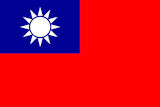
Zwischenfall an der Marco-Polo-Brücke in Peking: Beginn der Invasion der Japaner in China, die bis zum 9. September 1945 dauert (Zweiter Japanisch-Chinesischer Krieg - 抗日戰爭).
1937-07-09

Erst jetzt wird das Gesetz zur Klassifikation des königlichen Besitzes von 1937-03-31 bekannt gegeben. Darin wurde der königliche Besitz aufgeteilt in
- Kronbesitz
- Staatsbesitz
- persönlicher Besitz
1937-07-24

Es erscheint:
นรินทร์ ภาษิด [Narin Phasit] <1874 - 1950>: นรินทร์เปิดโลก. -- Bangkok : Sara Kan Chamrun, 1937-07-24. -- "Narin öffnet die Welt"
"We consider Europeans and Americans to be misguided in their religious views. When these people die, are they to be reborn [as a result of such views] in the land of Thailand? Are they to encounter the great suffering and hardship [that is faced by the Thai at the present moment] as a result of the fact that they did not engage in merit-making activities in their previous existence as we have done? And what about us? Thai people are correct in their views, engage in merit-making acts, and wish for all sorts of things. So tell me: when we die, are we to be reborn over in Western countries? Will we have all of the skills and abilities [that the Westerners have in the present day]? [And having been reborn in Western countries] will we live the lives of happiness and comfort that each and every one of us has wished for [while living our lives of great suffering and hardship in Thailand]?" [Übersetzung: Koret, Peter: The man who accused the king of killing a fish : the biography of Narin Phasit [นรินทร์ ภาษิด] of Siam (1874-1950). -- Chiang Mai : Silkworm, 2012. -- 397 S. : Ill. ; 21 cm. -- ISBN 9786162150432. -- S. 100. -- Fair use]
"Dwelling on a similar theme, Narin declares that it is his strongly held opinion that in many ways Westerners are following the intentions of the Buddha more truly than the Siamese themselves. This is because Westerners are rational in their actions and work for realistic consequences that they can observe with their own eyes. As a result, it is the Siamese who have been forced to spend so much of their money to send their students abroad and import foreign teachers to Siam rather than the other way around. Narin laments that every single Siamese male wants to become a monk but not a single one of them has the slightest idea of how to make the robes that a monk wears. In order to ordain in the hope of benefits obtained in future lifetimes, they can only rely on Chinese merchants, whose benefits in selling them their robes are to materialize considerably sooner." [Quelle: Koret, Peter: The man who accused the king of killing a fish : the biography of Narin Phasit [นรินทร์ ภาษิด] of Siam (1874-1950). -- Chiang Mai : Silkworm, 2012. -- 397 S. : Ill. ; 21 cm. -- ISBN 9786162150432. -- S. 355, Anm. 1. -- Fair use]
"I understand the story of King Taksin [ตากสินมหาราช, 1734 - 1782] with such clarity that I alone, prior to anyone else, have been brave enough to bring up [his sanity] as a topic with which to confront all of the sane people out there. I explain to them how great and truly incomparable the virtue of this man [and his benefit to our] country of Thailand. Without Taksin, we would surely live as slaves just like all of our neighbors. Narin therefore has not the slightest fear of other people. He is stubborn enough to believe in his own wisdom, grasping the underlying reason that [Taksin] is not crazy at all. Had he not been killed, many years ago our country and its religion would have become more advanced than even the nation of Japan." [Übersetzung: Koret, Peter: The man who accused the king of killing a fish : the biography of Narin Phasit [นรินทร์ ภาษิด] of Siam (1874-1950). -- Chiang Mai : Silkworm, 2012. -- 397 S. : Ill. ; 21 cm. -- ISBN 9786162150432. -- S. 268. -- Fair use]
1937-07-27

Kuramatsu Murai (村井 倉松) ist japanischer Gesandter bis 1941-05-16
1937-07-28

Liang Chaiyakal (เลียง ไชยกาล, 1896 - 1986), Abgeordneter für Ubol Ratchathani (อุบลราชธานี), macht im Parlament die Skandale beim Verkauf von Kronbesitz offenkundig. In der Zwischenzeit zwischen Erlass (1937-03-31) und Bekanntgabe (1937-07-09) des Gesetzes zur Klassifikation des königlichen Besitzes wurde ein beträchtlicher Teil des Kronbesitzes an Grund und Boden in Bangkok an 34 Personen verkauft, darunter Minister und Putschisten von 1932. Die Verkaufspreise liegen weit unter dem Marktwert. Am korruptesten waren dabei die Regenten. Der Ministerpräsident versucht, diese Verkäufe in der Assembly zu verteidigen, kann aber nicht überzeugen; vier Minister und das Council of Regency (Regenten) müssen zurücktreten. 33 der Personen, die Kronland erworben hatten, geben es wieder zurück. 1937-12-09 erklärt eine Kommission, dass durch die Rückgabe die Affaire beendet ist.
Einige der an der Korruption beteiligten:
- Regent Prinz Aditya Dibabha Abhakara (พลโท พลเรือโท พลอากาศโท พระเจ้าวรวงศ์เธอ พระองค์เจ้าอาทิตย์ทิพอาภา, 1900 - 1946)
- Polizei-General Adun Detcharat (อดุล เดชรัตน์ , 1894 - 1969)
- die Gattin von Colonel Phya Phahon Phonphayuhasena (พลเอก พระยา พหลพลพยุหเสนา, 1889-1958)
- Colonel Phraya Ritthi Akaney (Sala Emsiri) (พ.อ. พระยาฤทธิ์อัคเนย์ (สละ เอมะศิริ), 1889 - 1966), Landwirtschaftsminister
1937-07-29

Das Parlament wählt ein neues Council of Regency (Regenten).
1937-07-29

Die Bangkok Times kritisiert, dass Japaner den Baumwollanbau in Siam beherrschen.
1937-07-30

Die Regenten ziehen ihren Rücktritt zurück "as a result of anxiety expressed by the armed forces".
1937-08-03

Das Militär platziert Posten an den Rundfunkstationen und Postgebäuden. Deshalb befürchtet man in Bangkok einen Putsch.
1937-08-06

Aufgrund des Drucks durch das Militär zieht die Assembly die Ernennung neuer Regenten zurück und bestätigt die alten (korrupten) Regenten im Amt.
1937-08-08

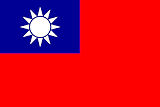
Japanische Truppen nehmen Peking/Beijing ein. Dies führt in Siam zur Polarisierung zwischen den Sympathisanten der Chinesen und denen, die das japanische Militär bewundern bzw. es gut finden, dass der wachsende Einfluss der Chinesen in Südostasien eingedämmt wird.
Abb.: Einmarsch japanischer Truppen in Peking, 1937-08-13
[Bildquelle: Wikimedia. -- Public domain]
1937-08-09 - 1937-12-21
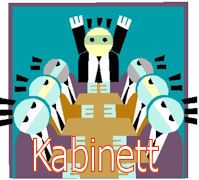
7. Kabinett: Pahon (พหลโยธิน) IV
1937-08-16

Allgemeine Mobilmachung Japans.
1937-08-28

Toyoda Kiichirō (豊田 喜一郎, 1894 - 1952) und Toyoda Eiji (1913 - 2013) gründen in Koromo (Japan) (挙母市, heute: Toyota City - 豊田市) die Toyota Motor Corporation (トヨタ自動車株式会社). Toyota wird die führende Automarke Thailands werden.
Abb.: ®Logo
Abb.: Lage von Koromo (挙母市) / Toyota City (豊田市)
[Bildquelle: OpenStreetMap. -- Creative Commons Lizenz (Namensnennung, share alike)]
Abb.: Toyota G-1-Lastwagen (トヨダ・G1型トラック) (1935), der erste Großauftrag des Militärs 1938
[Bildquelle: Mytho88 / Wikimedia. -- GNU FDLicense]
Abb.: Vorwiegend Toyotas, Bangkok, 2008
[Bildquelle: drburtoni. -- http://www.flickr.com/photos/84346589@N00/3236562000. -- Zugriff am 2013-10-05. -- Creative Commons Lizenz (Namensnennung, keine kommerzielle Nutzung, keine Bearbeitung)]
1937-08-29

William Burton in The New York Times:
"Where East is Still East Both white elephants and Siamese cats are virtually extinct in Siam, but the country is the most Oriental of all Far Eastern lands.
The temples of Siam are as magnificently dazzling as any dream of the Orient could be.
In atmosphere, too, Siam conforms to occidental notions of what the East should be. There is an attitude of lotus-eating languor, and any show of zeal in work that may be observed is by Chinese immigrants. The Siamese viewpoint, expressed in an old proverb, is that "in the water there is fish and in the ground there is rice" which with the sparse population means that not much is required for their simple wants. So they take life easily - and smilingly.
In another respect Siam actually conforms to the Hollywood tradition of all the Orient. There are really dancing girls there. Even in the few modern cabarets in Bangkok girls in the "floor show" still use the old native singing and hand rhythm, although often combining them with some Western foot and hip movement. It is slow and sinuous. And you can express your adoration for any given dancer by buying for a baht (about 45 cents) one of the red or white flowers in her hair. That's also an old Siamese custom."
1937-09

Staatliches Verbot für Mönche für jegliche politische Betätigung, inklusive Unterstützung von Wahlkandidaten in Worten.
1937-09-02

Erstflug des US-Jagdflugzeugs Grumman F4F Wildcat. Es wird zu "Beginn des Zweiten Weltkriegs das Standardjagdflugzeug auf den Flugzeugträgern der US-Marine und trägt bis in die erste Hälfte des Jahres 1943 die Hauptlast der Kämpfe auf dem pazifischen Schauplatz. Auch die Royal Navy setzt das Modell, bezeichnet als Martlet, auf ihren Flugzeugträgern ein." (Wikipedia)
Abb.: Grumman F4F Wildcat, 2008
[Bildquelle: Gonzolito / Wikimedia. -- GNU FDLicense]
Nach 1937-09-22
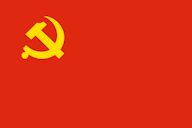
Auf Anordnung de Eigth Route Army (八路军) Office der Kommunistischen Partei Chinas (中國共產黨) in Hong Kong (香港) löst die Siamese Overseas Chinese Communist Party (SOCCP) alle linksradikalen Parteiorganisationen auf und gründet statt dessen
- All Siamese Overseas Chinese United Front for Anti-Japanese Resistance and National Salvation (抗聯 - Kang Lian)
- 文抗 (Wen Kang - Cultural Resistance)
- 商抗 (Shang Kang - Commercial Resistance)
- 婦抗 (Fu Kang - Women's Resitance)
- 工抗 (Gong Kang - Workers Resistance)
- 學抗 (Xue Kang - Student Resistance)
"The Eighth Route Army (simplified Chinese: 八路军; traditional Chinese: 八路軍; pinyin: bālù-jūn), also known as the 18th Army Group of the National Revolutionary Army (國民革命軍) of the Republic of China (中華民國), was group army under the command of the Chinese Communist Party (中國共產黨), nominally within the structure of the Chinese military headed by the Chinese Nationalist Party (中國國民黨) during the Second Sino-Japanese War. The Eighth Route Army was created from the Chinese Red Army (中國人民解放軍) on September 22, 1937, when the Chinese Communists and Chinese Nationalist Party formed the Second United Front (第二次国共合作) against Japan the outbreak of the Second Sino-Japanese War, as World War II is known in China. Together with the New Fourth Army (新四军), the Eighth Route Army formed the main Communist fighting force during the war and was commanded by Communist party leader Mao Zedong (毛泽东, 1893 - 1976) and general Zhu De (朱德, 1886 - 1976). Though officially designated the 18th Group Army by the Nationalists, the unit was referred to by the Chinese Communists and Japanese military as the Eighth Route Army. The Eighth Route Army wore Nationalist uniforms and flew the flag of the Republic of China and waged mostly guerrilla war against the Japanese, collaborationist forces and, later in the war, other Nationalist forces. The unit was renamed the People's Liberation Army) in 1947, after the end of World War II, as the Chinese Communists and Nationalists resumed the Chinese Civil War.
The Eighth Route Army consisted of three divisions (the 115th, which was commanded by Lin Biao (林彪, 1907 - 1971), the 120th under He Long (賀龍, 1896 - 1969), and the 129th under Liu Bocheng (劉伯承, 1892 - 1986)). During World War II, the Eighth Route Army operated mostly in North China, infiltrating behind Japanese lines, to establish guerrilla bases in rural and remote areas. The main units of the Eighth Route Army were aided by local militias organized from the peasantry.
The Communist Party's liaison offices in cities under Nationalist control such as Chongqing (重庆), Guilin (桂林) and Dihua (Ürümqi) (乌鲁木齐市 · ئۈرۈمچى شەھىرى)that were called Eighth Route Army Offices."
[Quelle: http://en.wikipedia.org/wiki/Eighth_Route_Army. -- Zugriff am 2015-01-28]
Zum Boykott des Handels mit Japan wird unter der Leitung von 抗聯 (Kang Lian) aus 18 bestehenden Triaden (三合會) die geheime Spionage- und Terrororganisation
- Chu Jian Tuan - Siamese Overseas Chinese Nation-Seller-Eliminating Association for Anti-Japanese Resistance and National Salvation
"Its operational procedure went something like this: Chu Jian Tuan would gather intelligence from dock coolies already under triad control to find out which local merchants were connected with export and import shipments to and from Japan. Based on that information, Kang Lian [抗聯] would issue a letter of warning to each of those merchants, giving detailed and precise records of the Japanese shipments concerned, and demanding that they place an advertisement for their personal apology and repentance in local Chinese newspapers within three days, as well as pay a fine to the anti-Japanese cause by transferring money through a Bangkok-based Chinese bank into a CCP-owned [中國共產黨] bank account in Hong Kong [香港]. Usually, one such letter was enough to bring about instant compliance. Otherwise, a second letter would be sent. Further procrastination or refusal to comply on the part of the recalcitrant nation-selling merchants would result in their serious injury or elimination by Chu Jian Tuan agents. Given the booming, lucrative nature of this respectable anti-Japanese, nationalist extortion racket, up to ten other less, or differently, principled movements and gangs soon emerged, some Kuomintang-led [中國國民黨], or non-partisan and self-organized, others simply criminal and opportunistic. At one point, the racket ring became so crowded and chaotic that Kang Lian decided to impose some order and discipline with its own newly-created armed force, the "Overseas Chinese Anti- Japanese Vanguard" or "Min Xian" [民前] (People’s Vanguard). Min Xian inspected, selected, and pressured only quality organizations among the mixed lot into joining an umbrella organization called "Sahasamakhom Prasan-ngan Koochat Totan Yipun" [สหสมาคมประสานงานคู่ชาติต่อต้านญี่ปุ่น] (Coordinated Anti-Japanese Resistance and National Salvation United Association) or "Nine Parties." The effectiveness of the Kang Lian and Chu Jian Tuan-imposed anti- Japanese boycott and trade sanctions in Siam can be gauged from contemporary Japanese and Thai official reports.
- By the end of August 1937, all Japanese goods in the Siamese market, from cloth to pottery, were totally boycotted by Chinese merchants.
- By the end of October 1937, all Chinese merchants completely refused to trade either openly or secretly with Japan.
- By January 1938, Indian merchants followed suit.
- And by the end of March 1938, the voluntary boycott of Japanese goods by local Chinese consumers had markedly increased; there were more reported cases of Chinese merchants who traded with Japan being subjected to violence, including exporters of rice, salt, and buffalo leather to the Japanese market; and the shipping of Japanese imports came to a complete halt as local coolies and boats refused to handle goods from Japanese-related ocean liners.
Never before had Japanese merchants in Siam suffered so much, a March 1938 issue of the journal of the Japanese Chamber of Commerce in Siam concluded gloomily. However, this bore no comparison at all with the tragic fate of their Chinese trading partners. As of July 30, 1940, sixty-one of them had been killed in the ongoing, violent boycott and trade sanctions campaign, according to a Thai government committee report.
[Übersetzt in: Kasian Tejapira [เกษียร เตชะพีระ] <1957 - >: Commodifying Marxism : the formation of modern Thai radical culture, 1927-1958. -- Kyoto : Kyoto Univ. Pr., 2001. -- 390 S. : Ill. ; 23 cm. -- (Kyoto area studies on Asia ; 3). -- ISBN 1876843985. -- Revision of the author's thesis (doctoral) -- Cornell University, 1992. -- S. 44f.]
1937-09-23
Es erscheint:
" Wie Adam und Eva!" : Menschen, die man bisher vergeblich suchte ... von Dr. H. [Hugo] A. Bernatzik in den Urwäldern Nordsiams entdeckt. -- In: Berliner Illustrierte Zeitung. -- 1937-09-23. -- Fotoreportage über die Phi Tong Luang (ผีตองเหลือง / ຜີຕອງເຫລືອງ / Geister der gelben Blätter; heute: Mlabri - มลาบรี)
Abb.: "Wie Adam und Eva"
[Bildquelle: Byer, Doris <1942 - >: Der Fall Hugo A. Bernatzik : ein Leben zwischen Ethnologie und Öffentlichkeit ; 1897 - 1953. -- 2., durchges. Aufl. -- Köln : Böhlau, 1999. -- 456 S. : Ill. ; 24 cm. -- ISBN 3-412-08399-2. -- Abb.: 59]
1937-09-26

Vertrag zwischen Siam und Japan. Er entspricht völlig den gleichberechtigten Verträgen Siams mit anderen Staaten.
1937-10
Gesetz über Heilberufe regelt die Zulassung als Arzt (first-class doctor) oder Hilfsarzt (second-class doctor). Alle "Arzte", die von sich behaupten, moderne Medizin zu betreiben müssen ihre Kenntnisse nachweisen und sich registrieren lassen.
"The writer spent an afternoon in the shop of one such modern quack in Huey Yot [ห้วยยอด]. His shop was neat and clean and well stocked with imposing bottles full of various colored liquids. Every bottle was neatly lettered in English. The "doctor" was very hospitable and proudly exhibited his stock. The bottles bore such unusual names that the writer felt impelled to inquire as to the origin of some of them. The "doctor" explained that a Bangkok friend had done the labels for him. He himself could not read English. This explained everything, because the bottles bore such titles as "Potent Water", "Murder", "Efficacious Liquid", "Love Potion", "Energy Liquor", "Motive Power Powders", etc. The crowning touch was three brown jugs which the "doctor" explained were a set. They bore three labels in sequence which read: "Love", "Intrigue", "Sudden Death". He admitted that he never gave any of the liquids as medicines, but that they were there to look imposing and to attract trade. His only actual prescription was an injection of Neosalvarsan [Mittel zur Behandlung von Syphilis]. His shop window was piled high with empty bottles which indicated the briskness of his business." [Quelle: Landon, Kenneth Perry <1903 - 1993>: The Chinese in Thailand. -- Londondon : Oxford UP, 1941. -- 310 S. ; 23 cm. -- (International Research Series of the Institute of Pacific Relations). -- S. 84f.]
Abb.: Lage von Huey Yot [ห้วยยอด]
[Bildquelle: OpenStreetMap. -- Creative Commons Lizenz (Namensnennung, share alike)]
1937-10
Gesetz gegen Preistreiberei regelt Preise und Gewinnspannen bei Artikeln der Grundbedürfnisse. Es ist gegen die chinesischen Händler gerichtet.
1937-10
Premiere des Musikfilms เพลงหวานใจ ("His sweet melody") von Kun Wichitmatra (ขุนวิจิตรมาตรา, 1897 - 1980)
Darsteller:
- มานี สุมนนัฎ (1915 - 1990)
- จำรัส สุวคนธ์
- ประมวล รัศมิทัต
- นัยนา วาณีวัฒน์
- ทองคำ มาติน
- เกษม มิลินทจินดา
- เชิญ ศิวเสน
- สมยศ ทัศนพันธ์ (1915 - 1986)
- สวัสดิ์ วิธีเทศ
Abb.: Plakat
1937-10


US-Präsident Roosevelt verurteilt die japanische Aggression. Der japanische Präsident der South Manchuria Railway, Yosuke Matsuoka (松岡 洋右, 1880 - 1946) erwidert:
"Japan ist dabei seinen Machtbereich zu erweitern, und welches Land hat in seiner Expansionsepoche der Versuchung widerstanden, auf den Nachbarn überzugreifen? Fragt den amerikanischen Indianer oder den Mexikaner nach den qualvollen Übergriffen, die ihnen die jungen Vereinigten Staaten zufügten!" [Zitiert in: Zich, Arthur <1934 - 2012>: Die aufgehende Sonne / Arthur Zich [u.a.]. -- Amsterdam : Time-Life International, 1979. -- 208 S. : Ill. ; 30 cm. -- (Time-Life Bücher ; Der Zweite Weltkrieg). -- Originaltitel: The rising sun (1977). -- S. 23.]
1937-11-05

Bern (Schweiz): Unterzeichnung des Treaty of Friendship, Commerce and Navigation mit der Schweiz
Abb.: Europäische Staaten, mit denen Siam 1937 Treaties of Friendship, Commerce and Navigation unterzeichnet
[Bildquelle: Bacon's standard map of Europe, 1923 / Wikimedia. -- Public domain]Dazu kommen noch außerhalb Europas: USA und Japan
1937-11-05

Bangkok: Unterzeichnung des Treaty of Friendship, Commerce and Navigation mit Belgien
1937-11-05
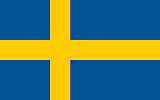
Stockholm (Schweden): Unterzeichnung des Treaty of Friendship, Commerce and Navigation mit Schweden
1937-11-05

Kopenhagen (Dänemark): Unterzeichnung des Treaty of Friendship, Commerce and Navigation mit Dänemark
1937-11-07

Wahlen. Alle Frauen und Männer über 21 sind wahlberechtigt. Politische Parteien sind nicht zugelassen, obwohl einige Abgeordnete - besonders Thong-in Buripat (ทองอินทร์ ภูริพัฒน์, 1906 –
1949) , die Zulassung der Bildung politischer Parteien gefordert hatten.
"General elections were held in Siam on 7 November 1937. At the time there were no political parties,[1] so all candidates ran as independents. Voter turnout was 40.2%.[2] Results
Party Votes % Seats Independents 100 Invalid/blank votes - - Total 2,462,535 100 Source: Nohlen et al
References
- Nohlen, D, Grotz, F & Hartmann, C (2001) Elections in Asia: A data handbook, Volume II, p284 ISBN 0199249598
- Nohlen, D, Grotz, F & Hartmann, C (2001) Elections in Asia: A data handbook, Volume II, p278 ISBN 0199249598"
[Quelle: http://en.wikipedia.org/wiki/Siamese_general_election,_1937. -- Zugriff am 2011-11-04]
Der Frauenanteil an den Wählern ist 1 Frau : 3 Männer.
Keiner der Putschisten von 1932 stellte sich zur Wahl. Nur 11 der bisherigen Abgeordneten werden wiedergewählt, darunter die beiden Abgeordneten von Ubon Ratchathani (อุบลราชธานี)
- Thong-in Buripat (ทองอินทร์ ภูริพัฒน์, 1906 –
1949) - Liang Chaiyakal (เลียง ไชยกาล, 1896 - 1986)
In Nordthailand gewinnt ein Lao-Kandidat, weil er gegen die Zentral-Siamesen ist.
1937-11-13

Bangkok: Unterzeichnung des Treaty of Friendship, Commerce and Navigation mit den USA
1937-11-15
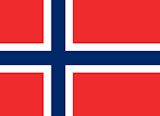
Oslo (Norwegen): Unterzeichnung des Treaty of Friendship, Commerce and Navigation mit Norwegen
1937-11-23

Bangkok: Unterzeichnung des Treaty of Friendship, Commerce and Navigation mit Großbritannien
1937-12-01

USA: Premiere des abendfüllenden Zeichentrickfilms Snow White and the Seven Dwarfs der Walt-Disney-Studios. Er wird Vorbild für die meisten kommenden abendfüllenden Zeichentrickfilme. Über die Jahre spielt der Film 1,7 Milliarden US-Dollar ein.
Abb.: ©Plakat
[Bildquelle: Wikipedia. -- Fair use]
1937-12-03
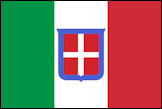
Bangkok: Unterzeichnung des Treaty of Friendship, Commerce and Navigation mit Italien
1937-12-07

Bangkok: Unterzeichnung des Französisch Siamesischen Vertrags der Freundschaft, des Handels und der Schifffahrt. Er beseitigt die letzten Reste der ungleichen Vorrechte Frankreichs.
1937-12-08

Bangkok: Unterzeichnung des Treaty of Friendship, Commerce and Navigation mit Japan
1937-12-10
Erste Sitzung des neugewählten Parlaments.
1937-12-13

Besetzung Nanjing's durch die Japaner. Beginn der Massaker von Nanjing (南京大屠殺).
Abb.: Lage von Nanjing (南京大屠殺)
[Bildquelle: OpenStreetMap. -- Creative Commons Lizenz (Namensnennung, share alike)]
Abb.: Chinesische Zivilisten werden von japanischen Soldaten lebendig begraben
"Die Massaker von Nanking (chinesisch 南京大屠殺 / 南京大屠杀, Pinyin Nánjīng dàtúshā; jap. 南京大虐殺 Nankin daigyakusatsu) waren Kriegsverbrechen der japanischen Besatzer in der chinesischen Hauptstadt Nanjing (南京) während des Zweiten Japanisch-Chinesischen Krieges. Den Protokollen der Kriegsverbrecherprozesse nach dem Zweiten Weltkrieg zufolge wurden mindestens 200.000 Zivilisten und Kriegsgefangene ermordet sowie rund 20.000 Mädchen und Frauen vergewaltigt.
Das Massaker begann am 13. Dezember 1937 nach der Besetzung der Stadt durch Truppen der Kaiserlich Japanischen Armee (大日本帝國陸軍) und dauerte sechs bis sieben Wochen."
[Quelle: http://de.wikipedia.org/wiki/Massaker_von_Nanking. -- Zugriff am 2013-10-02]
"In north and central China, Japanese soldiers committed frightful atrocities—of which the Rape of Nanking in 1937 was only the most notorious example. A Japanese corporal returning from central China in 1942 boasted to friends: "While out foraging for supplies we got hold of a pregnant woman. We stuck our bayonets in her huge belly and skewered her like a piece of meat."
One Japanese soldier told of seeing others
"beat a Chinese with rocks until his skull split open and he fell in a pool of blood. Then they kicked him and threw more stones. Officers watched the killing and did nothing."
In many combat sectors, Japanese policy was to put the torch to everything along its Army's line of march. Recalled a soldier: "Every village and hamlet in the operations zone was burned to the ground. Not even a single puppy was left alive."
[Quelle: Japan at war / by the editors of Time-Life Books. -- Alexandria, Va. : Time-Life, 1980. -- 208 S. : Ill. ; 29 cm. -- (World War II). -- ISBN 0809425289. -- S. 61. -- Fair use]
1937-12-20

Eröffnung einer Ausstellung von Trachten der Volksgruppen Thailands in der Lecture Hall der Siam Society in Bangkok. Einführungsvortrag von dem dänischen Völkerkundler Erik Seidenfaden (1881 - 1958)
SIAM'S TRIBAL DRESSES by
Major Erik Seidenfaden [1881 - 1958].
The Siam Society has to-day invited you to inspect a collection of national and tribal dresses gathered from all over the Kingdom during the last few years, and it is hoped that you will take this rather unique opportunity to acquaint yourselves with these interesting costumes, many of which are quite pretty, besides showing no mean ability and artistic sense in the execution of the different patterns and the composition of the colours used.
A few years ago I got the idea of collecting, as far as possible, all the national costumes of the various branches of the Thai people, as well as all the dresses of the non-Thai communities who are mostly domiciled in the hills on the western boundary of the kingdom and in the mountainous North. My thought was really to have all these dresses executed in a size to suit models of a height of not more than fifty centimetres.
These models, clothed correctly to represent all the various elements of the population of the kingdom of Siam were to be placed in air-tight glass show cases and placed on the top of the book cases of our Library. It is my hope that it will still be possible to do so, though the better solution would of course be that the National Museum establish a Folk Museum or an ethnographical branch, where all the national and tribal costumes of Siam would be exhibited on full size models, wearing the traits of the respective branches of the great Thai nation and of the many lesser tribes, whether of Mongolian, Môn-Khmer or Negrito stock. As you will see, the dresses exhibited here are of varying sizes, some in full size and some in reduced size, due to the instructions not being followed by all the contributors. During my frequent travels in the provinces in these latter years I have noticed to my sorrow how the picturesque and time-honoured national and regional costumes, nearly all over the land, are fast disappearing, to be replaced by dresses of a more or less international fashion. To cite examples : in the town of Chiengmai [เชียงใหม่] to-day one rarely sees a girl or woman, with the exception of the quite old women, wearing the pretty yellow phā-sin [ผ้าซิ่น] with the black horizontal stripes ; the same is the case with the girls of the North-Eastern Thai. It has been rightly said that the honk of the motor lorry with its load of cheap foreign textiles sounds the death knell of the national costumes, while the radio and the cinematograph are rapidly exterminating provincial dialects and ancient manners and customs.
Abb.: Typisches Nord-Thai (ไทยวน) phā-sin [ผ้าซิ่น]
[Bildquelle: Alifshinobi / Wikimedia. -- Creative Commons Lizenz (Namensnennung, share alike)]Therefore if future generations are not to be kept in ignorance as to how their ancestors clothed themselves, it is high time now to collect all the various dresses still worn by the inhabitants of this picturesque and beautiful land, and to keep them carefully preserved in our museums for future information and study.
The exhibition you see to-day gives a fairly good impression of that richness of national and tribal costumes which is Siam's. It is, however, not complete, as some tribes in the North as well as some in the North-east are still unrepresented. In all some seventy-two distinct national and tribal dresses are exhibited, though some of them only represent septs or clans of the same tribe.
The bringing together of this rich collection is first of all due to His Serene Highness Prince Varnvaidyakorn's unstinted and generous assistance. As a matter of fact, without the help of His Serene Highness this exhibition would not have been possible. I take this opportunity to tender the sincerest thanks of the Council and the Members of the Siam Society to His Serene Highness for his very kind and interested succour."
[Quelle: Journal of the Siam Society <Bangkok>. -- vol.31, pt.2 (1939). -- S. 169f. -- Fair use]
"Major Erik Seidenfaden (1881–1958) was a Danish ethnologist and anthropologist who researched and authored books, on the history, culture and languages of the Thai peoples. As an expatriate major serving in the Siamese military, Seidenfaden lived in Thailand from 1906 to 1947. He served as part of the Provincial Gendarmerie where his role was to assist with the modernization of the Siamese military. He played an active role in the Siam Society." [Quelle: http://en.wikipedia.org/wiki/Erik_Seidenfaden_%28ethnologist%29. -- Zugriff am 2015-04-13]
1937-12-21 - 1938-12-16

8. Kabinett: Pahon (พหลโยธิน) V
1937-12-30

Unterzeichnung des Treaty of Friendship, Commerce and Navigation (Freundschaft-, Handels und Schifffahrtsvertrag) mit dem Deutschen Reich. Nach dem Kriegt tritt er 1953 wieder in Kraft und gilt bis 1974 (Übernahme der handelspolitischen Vertragskompetenz durch die Europäische Gemeinschaft).
Abb.: Deutscher Vertragstext
Abb.: Erste Seite der Thai-Fassung des Vertrags (der Vertrag ist in Deutsch, Thai und Englisch abgefasst)
1937-12-28

Die ca. 30 Siamesen, die in Deutschland studieren, treffen sich in Berlin als "Verein siamesischer Studenten"
1938-01

Abb.: Lage von Wat Phichaiyat [วัดพิชยญาติการามวรวิหาร]
[Bildquelle: OpenStreetMap. -- Creative Commons Lizenz (Namensnennung, share alike)]
"A second conflict within the Thammayut order [ธรรมยุติกนิกาย] took place at Wat Phichaiyat [วัดพิชยญาติการามวรวิหาร] in Thonburi [ธนบุรี], across the river from Bangkok. The dispute started in January 1938 when the abbot, Methathammarot (Sao Soriyo), together with twenty-seven resident monks and thirteen novices, requested that their temple be returned to the Mahanikai order [มหานิกาย]. The Thammayut senior monks not only refused to let the wat convert, they sought to defrock the abbot. When the Mahanikai somdet, Wannarat (Phae) [สมเด็จพระวันรัต (แพ ติสฺสเทโว, 1856 - 1944)], became supreme patriarch in November 1938, the case was decided in favor of the abbot of Wat Phichaiyat and his monks. By 2 September 1939 the monks and novices at Wat Phichaiyat were legally and ceremonially returned to the Mahanikai order." [Quelle: Kamala Tiyavanich [กมลา ติยะวนิช] <1948 - >: Forest recollections : wandering monks in twentieth-century Thailand. -- Honolulu : Univ. of Hawai’i Pr., 1997. -- ISBN 0824817818. -- S. 192. -- Faire use]
1938-01-04 - 1944-08-05
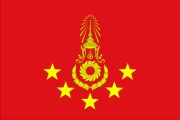
Field Marshal Luang Pibulsonggram (Plaek Pibulsonggram) (จอมพล แปลก พิบูลสงคราม, 1897 - 1964) ist Commander-in-Chief of the Royal Thai Army (ผู้บัญชาการทหารบก)
Abb.: Luang Pibulsonggram (Plaek Pibulsonggram) (จอมพล แปลก พิบูลสงคราม)
[Bildquelle: Wikipedia. -- Public domain]
1938-01-16

Erstmals tritt in der New Yorker Carnegie Hall ein Jazzmusiker auf: Benny Goodman (1909 - 1986), "The King of Swing". Damit beginnt sozusagen die Swing-Ära.
Künstlerlink auf Spotify:
URI: spotify:artist:1pBuKaLHJlIlqYxQQaflve
URL: https://open.spotify.com/artist/1pBuKaLHJlIlqYxQQaflve
Abb.: Benny Goodman, 1971
[Bildquelle: Hans Bernhard / Wikipedia. -- GNU FDLIcense]
1938-01-27 + 1938-05-25


Laut Berichten der deutschen Gesandtschaft an das Auswärtige Amt hat Siam in Italien zwei Minenleger und zwei Torpedoboote bestellt. Deutsche Firmen haben einzelne Maschinenteile sowie die Telegraphieanlage geliefert.
1938-01-31

Die Royal Thai Navy nimmt das japanische Küstenpanzerschiff HTMS Thonburi (ธนบุรี) in Dienst.
Abb.: HTMS Thonburi (ธนบุรี), 1938
[Bildquelle: Wikipedia. -- Public domain]
Abb.: Mannschaft des Küstenpanzerschiffs HTMS Thonburi (เรือหลวงธนบุรี, 1938 - 1959), 1938
1938-02-04
Hia (1879 - ) und Tan Gengchuang (Guang-iam) registrieren die Teochew Association (潮州) als Vehikel für antijapanische Tätigkeiten. Ab 1938-10-01 gibt die Gesellschaft die Zeitung Zhongguoribao (中國日報) heraus.
1938-02-10 oder 1938-03-22

Tod von Kruba SiWichai (Phra Si Vijayo, 1878 - 1938) ครูบาศรีวิชัย พระสีวิไชย
Abb.: Kruba SiWichai (Phra Si Vijayo), Wandgemälde Wat Chet Yot (วัดเจ็ดยอด), Chiangmai, 2010
[Bildquelle: Takeaway / Wikimedia. -- Creative Commons Lizenz (Namensnennung, share alike)]
"After Siwichai died, his body was kept for six years. On his cremation day in 1944, Siwichai’s followers came to his funeral in Lamphun [ลำพูน / หละปูน] from as far away as Sipsong Panna [สิบสองปันนา / 西双版纳州] (now in China) and Chiang Saen [เชียงแสน] (the northernmost district of Chiang Rai Province [เชียงราย / เจียง ฮาย ]). Some came from various hill-tribe villages in Chiang Mai [เชียงใหม่] and Lamphun. The sangha provincial heads of Lamphun and Chiang Mai, however, refused to attend the cremation."[Quelle: Kamala Tiyavanich [กมลา ติยะวนิช] <1948 - >: Forest recollections : wandering monks in twentieth-century Thailand. -- Honolulu : Univ. of Hawai’i Pr., 1997. -- ISBN 0824817818. -- S. 316, Anm. 108. -- Faire use]
1938-02-12

Die gesamte Führerschaft der kommunistischen Auslandschinesenorganisationen All Siamese Overseas Chinese United Front for Anti-Japanese Resistance and National Salvation (抗聯 - Kang Lian) und Chu Jian Tuan - Siamese Overseas Chinese Nation-Seller-Eliminating Association for Anti-Japanese Resistance and National Salvation wird festgenommen und einen Monat später ausgeschafft.
1938-03
Eröffnung des Schnellzugverkehrs Bangkok - Ubon Ratchathani (อุบลราชธานี)
Abb.: Eisenbahnstrecke Bangkok - Ubon Ratchathani (อุบลราชธานี)
[Bildquelle: CIA. -- Public domain]
1938-03
Aerial Transport Co. of Siam verlängert die Fluglinie nach Hanoi (Hà Nội) bis Hong Kong (香港).
Abb.: Bangkok - Korat (โคราช) - Hanoi (Hà Nội) - Hong Kong (香港)
[Bildquelle: Bartholomew, J. G. <1860 - 1920>: A literary & historical atlas of Asia. -- London, o. J.]
1938-03

Der japanische Kaiser gibt den Befehl, im Falle eines Kriegs, die Neutralität Siams nicht zu verletzen, wenn Siam nicht zuvor zustimmt.
1938-03
Zahlreiche Beamte und Würdenträger Siams erhalten Auszeichnungen des Dritten Reichs (Nazi-Deutschland).
1938-03

Ein Londoner Radiosender sendet das Schauspiel Magic Lotus von Prem Chaya [เปรมไชยา, 1915 - 1981]. Es ist eine Bearbeitung des klassischen siamesischen Stücks Lilit Pra Law [ลิลิตพระลอ] für englisches Publikum. 1938-04 wird das Stück in Yorkshire auf einer Bühne aufgeführt.Prem Chaya [เปรมไชยา = Prem Purachatra - เปรมบุรฉัตร] <1915 - 1981>: Magic lotus : a romantic fantasy. -- Bangkok : Krungdeb Barnakarn Press, 1937. -- 110 p. ; 19 cm. -- An adaptation for the English stage of the fifteenth-century Siamese classic Lilit Pra Law [ลิลิตพระลอ].
Abb.: Prem Chaya [เปรมไชยา = Prem Purachatra - เปรมบุรฉัตร] mit Gattin
[Bildquelle: th.Wikipedia. -- Fair use]
Abb.: Lage von Yorkshire
[Bildquelle: XrysD / Wikimedia. -- GNU FDLicense]
1938-03-05
Bangkok Times: jährlich leiden ca. 3 Mio. Siamesen an Malaria
1938-03-07

Ratifizierung des Treaty of Friendship, Commerce and Navigation between Siam and Japan.
1938-03-13
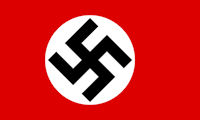
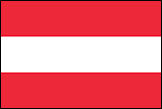
Anschluss Österreichs an Deutsche Reich. Dies führt in Siam dazu, dass in der Militärpresse vermehrt Artikel über die an Frankreich und Großbritannien verlorenen verlorenen Territorien Siams erscheinen.
Abb.: Stimmzettel 1938-04-10
1938-03-22

Tod von Kruba Srivichai (ครูบาศรีวิชัย, geb. 1878).
Abb.: Kruba Srivichai (ครูบาศรีวิชัย), Wat Chet Yot (วัดเจ็ดยอด), Chiang Mai (เชียงใหม่)
[Bildquelle: Takeaway / Wikipedia. -- GNU FDLicense]
"Kruba Srivichai, Patron Saint of Chiang Mai By Josh Scoggins
(compiled form various sources)
Pra Kruba Srivichai [ครูบาศรีวิชัย] has been called the 'Engineer Monk' because he mounted and supervised over one hundred construction projects in northern Thailand, including the erection of many Buddhist wats (temples). Of special note, he organized the building of a road leading to Wat Phrathat Doi Suthep [วัดพระธาตุดอยสุเทพ], the grandiose temple complex that sits on a mountain top overlooking the city of Chiang Mai [เชียงใหม่]. The road went under construction in 1934 (2477 in the Thai calendar).
Abb.: Lage von Wat Phrathat Doi Suthep (วัดพระธาตุดอยสุเทพ)
[Bildquelle: OpenStreetMap. -- Creative Commons Lizenz (Namensnennung, share alike)]At that time only the strong and devoted made the minimum five hour hike up the mountain to Doi Suthep (ดอยสุเทพ) through dense tropical forest. Ajahn Pichest Boonthumme [อาจารย์พิเชษฐ์ บุญธรรมมี] has said that at that time the government couldn't raise sufficient money to build the road, so they called upon Kruba Srivichai to help. He sent word far and wide, and because of his great popularity, volunteers came from all over Thailand to lend a hand to the effort. It is said that as many as 3,000 to 4,000 people a day came to build the road, which was originally paved in stone.
Because so many volunteers heeded his call, Kruba’s original request for each village group to complete 50 feet of road was decreased to 10-15 feet. Day by day, a massive volunteer workforce cleared the area and set stones on the roadway. The road was completed in 5 months and 20 days. Kruba Srivichai was the first to inaugurate the opening of the road on 30 April, 1935.
Kruba was ordained at Wat Ban Pang [วัดบ้านปาง] in Lamphun [ลำพูน], where he began studies at the age of eighteen. He was quickly recognized as a great and pious monk, even among the hill tribe people. He passed away on 20 February 1938 (BE 2481) at the age of 60. His bones remain in the stupa at Wat Chammadevi. He was given the title Nak Bun Haeng Lanna [นักบุญแห่งล้านนา], which may be translated as Lanna Saint.
A very important and often visited monument honoring Kruba is located just past the Chiang Mai zoo [สวนสัตว์เชียงใหม่], in front of Huay Kaew (ห้วยแก้ว) falls. Visitors and pilgrims to Doi Suthep routinely stop here to make offerings and send prayers on their way up (and down) the mountain.
Kruba Srivichai was famous for his kind, pious and compassionate nature. He ate very little, and spent long hours in meditation. He was very bright and was always doing good works for Thai people. Even as a youth he was regarded with great merit. He is known to have regularly released caged animals, and to have given away to others the food and alms that was given to him on his daily rounds, an act that angered many of his patrons who feared that they would not be blessed if he gave away their offerings.
Pichest Boonthamme [อาจารย์พิเชษฐ์ บุญธรรมมี] considers Kruba a patron saint, and has very prominent altars and photos of him in his classroom, alongside the Buddha, Shivaga Komarpaj [ชีวกโกมารภัจจ์], (the father of Thai massage), and the Thai Earth Mother [พระแม่ธรณี]."
[Quelle: http://www.thaihealingalliance.com/membersonly/Narratives_and_Member_Submissions/Kruba%20Srivichai,%20By%20Josh%20Scoggins.pdf. -- Fair use]
ausführlich: http://www.payer.de/thailandchronik/ressourcen.htm